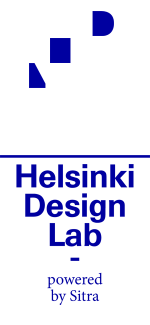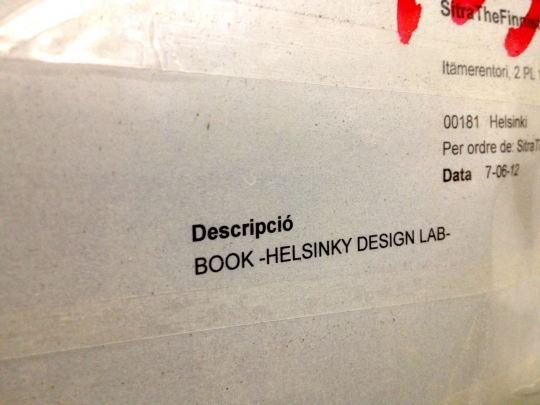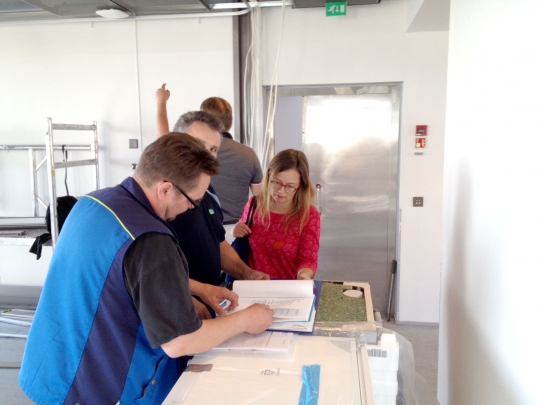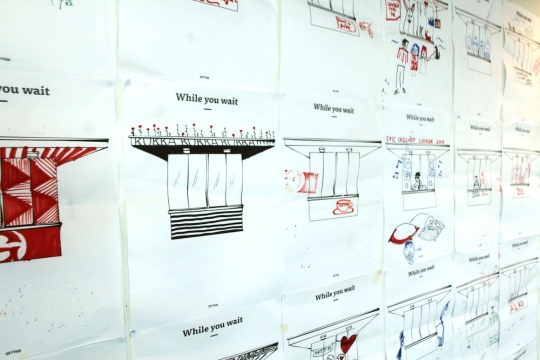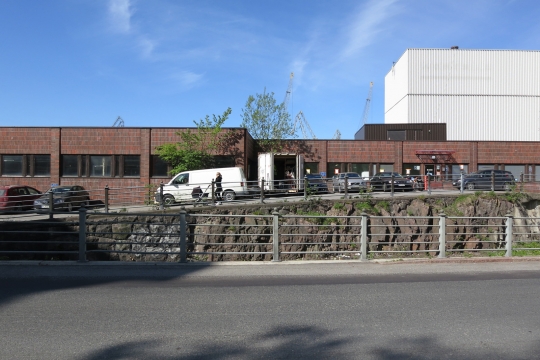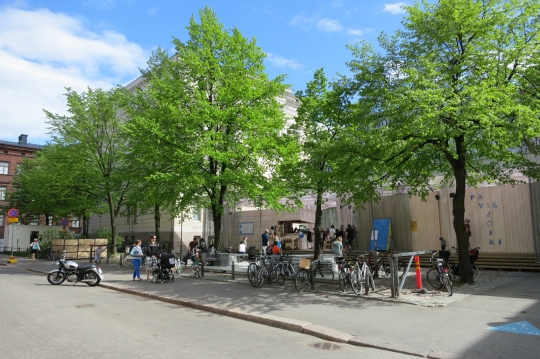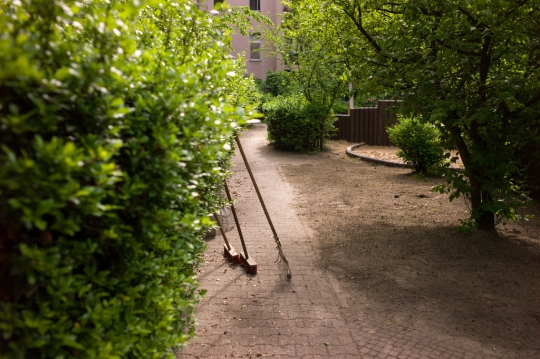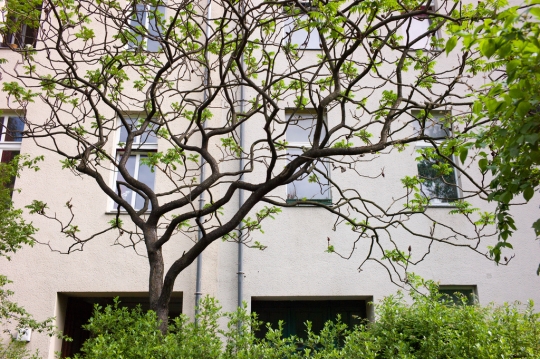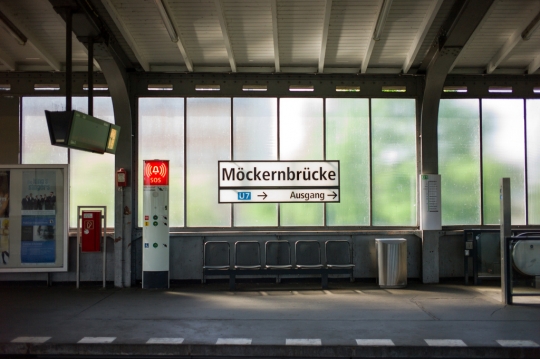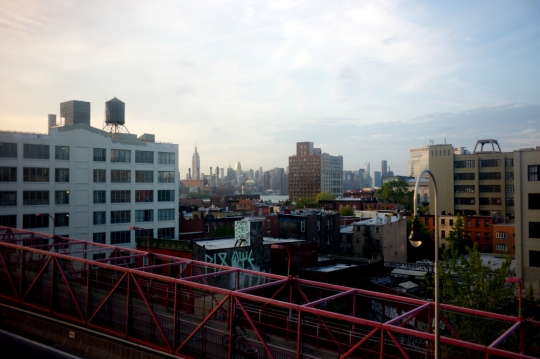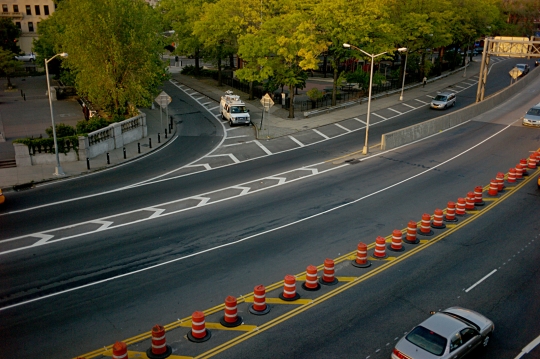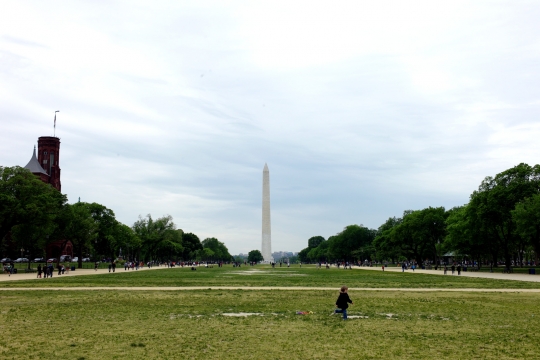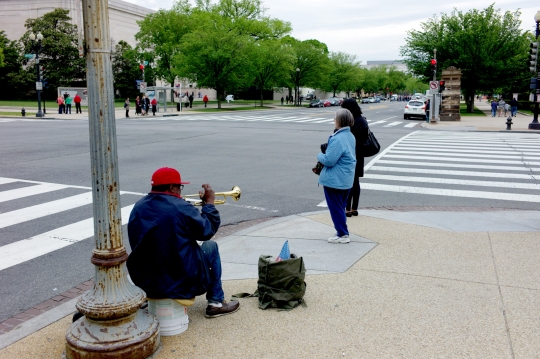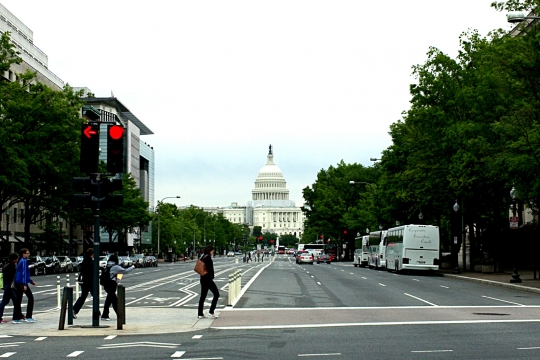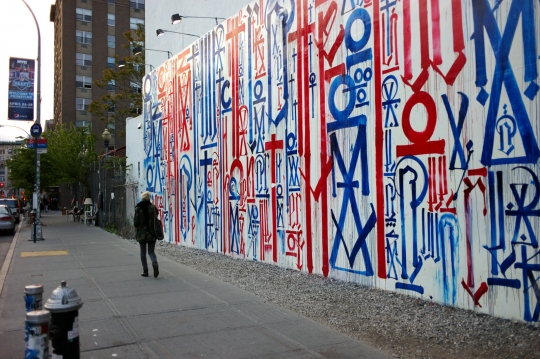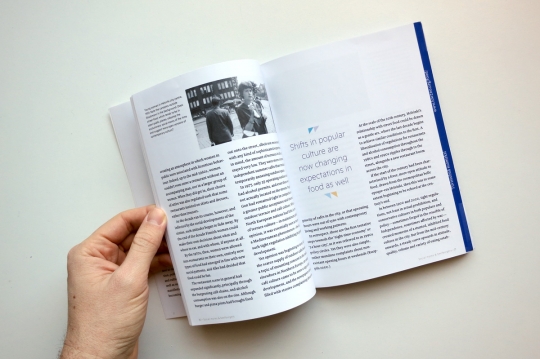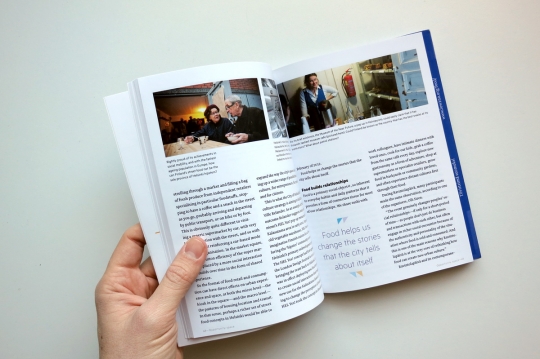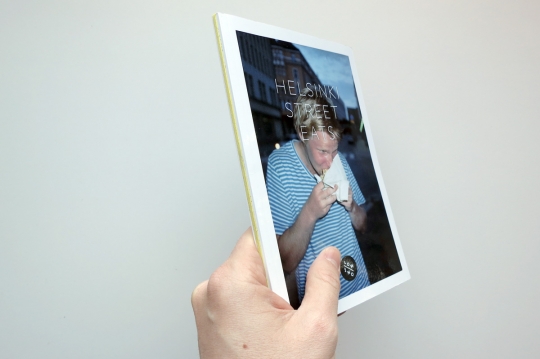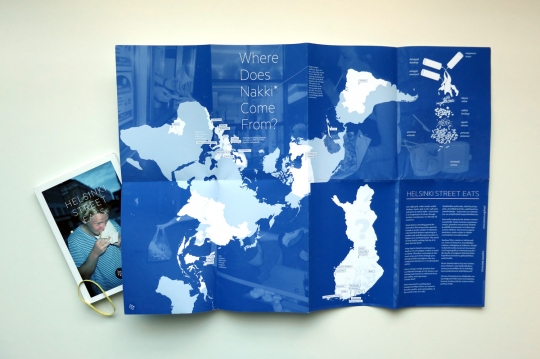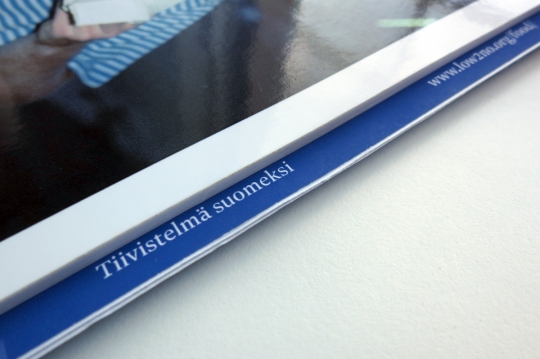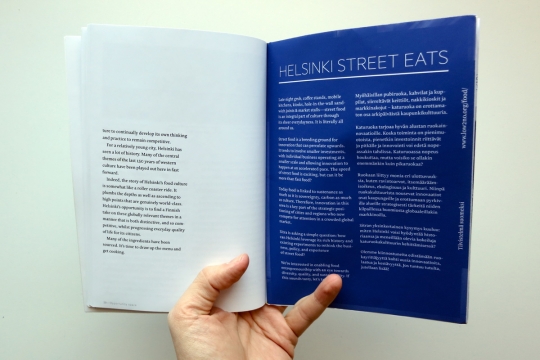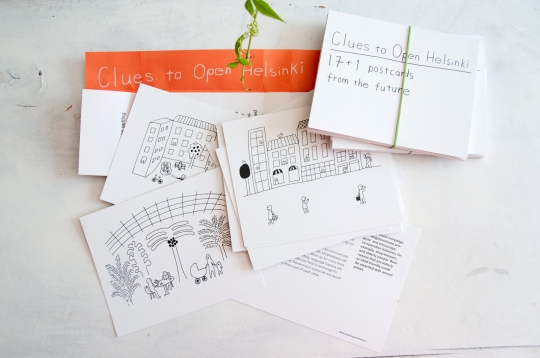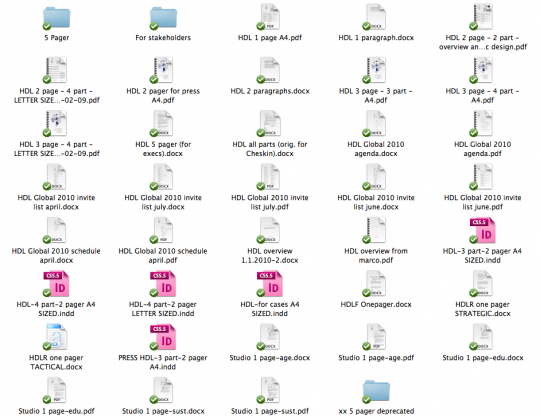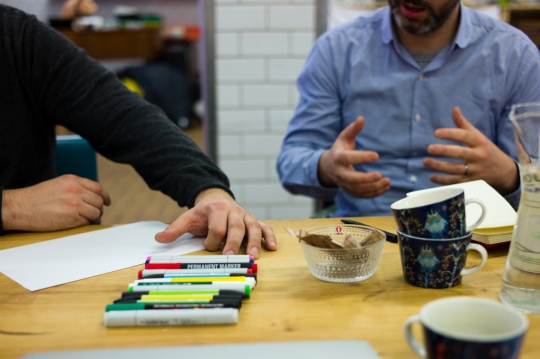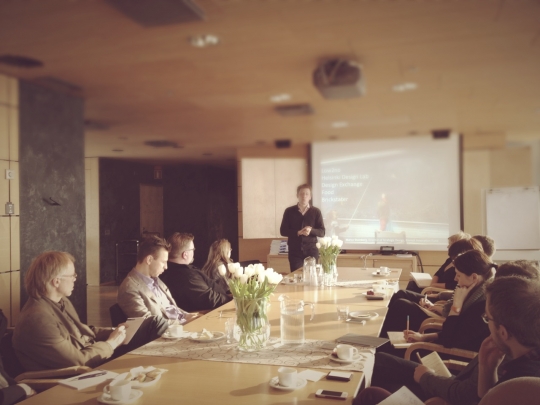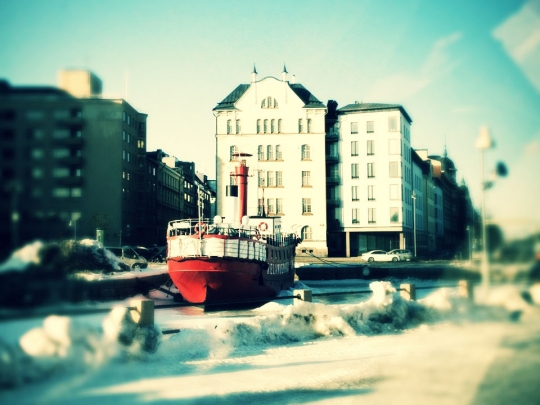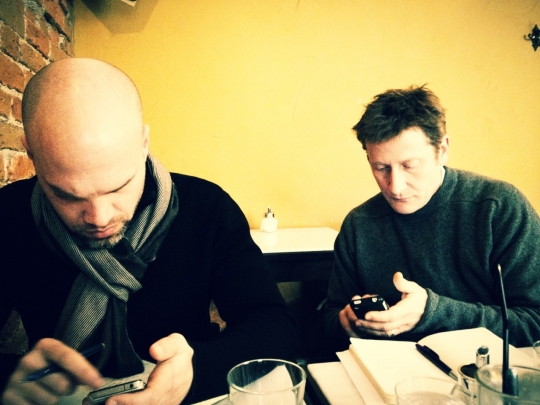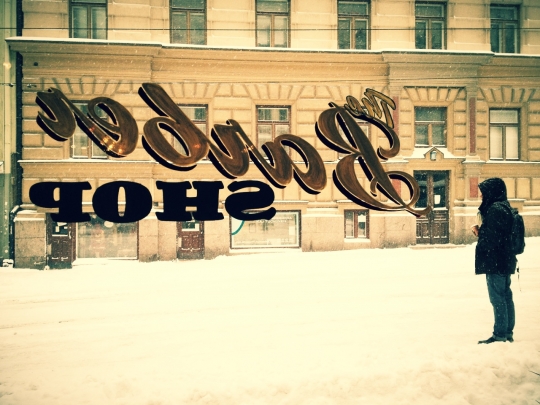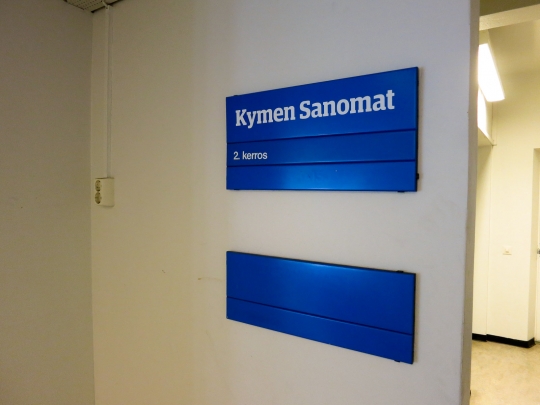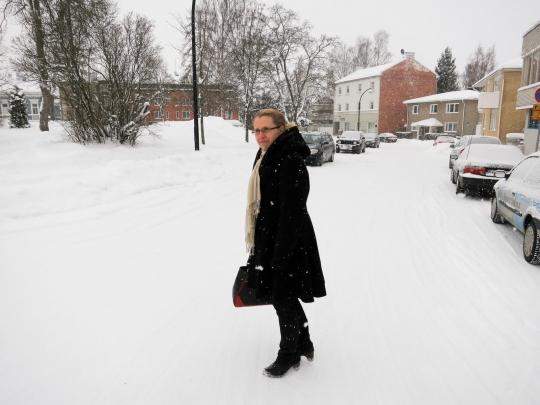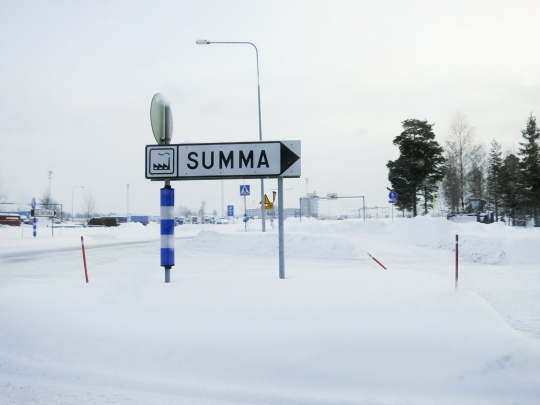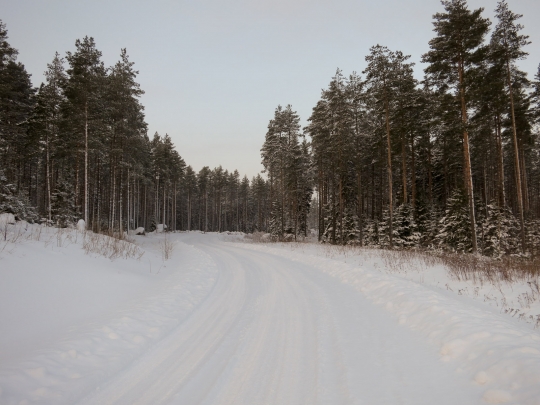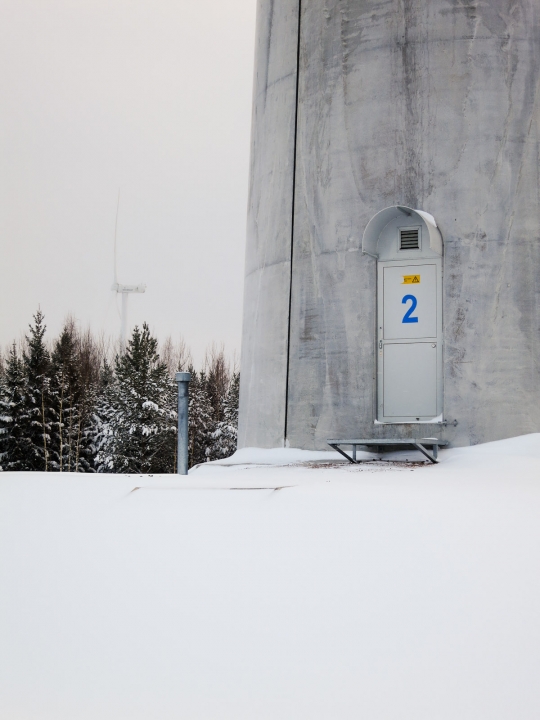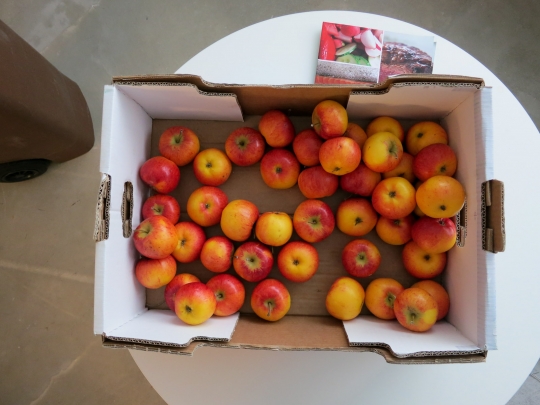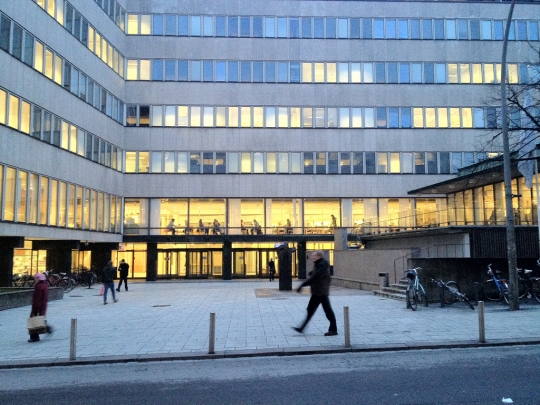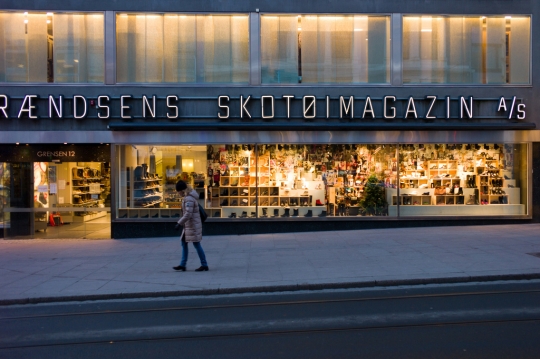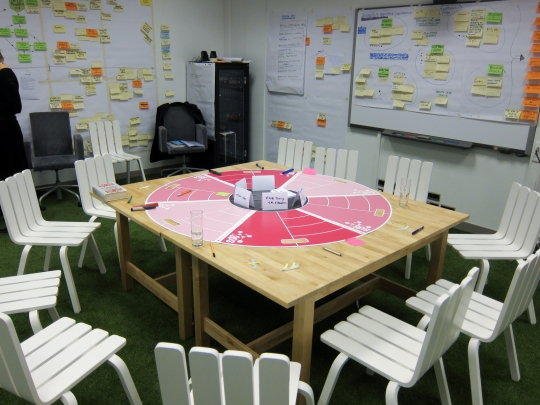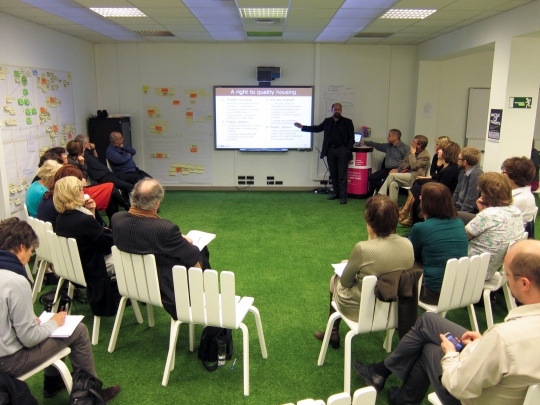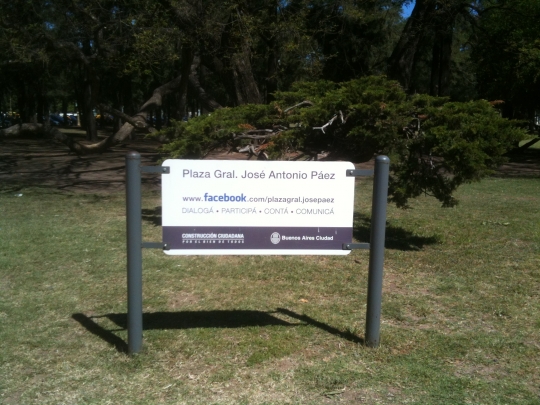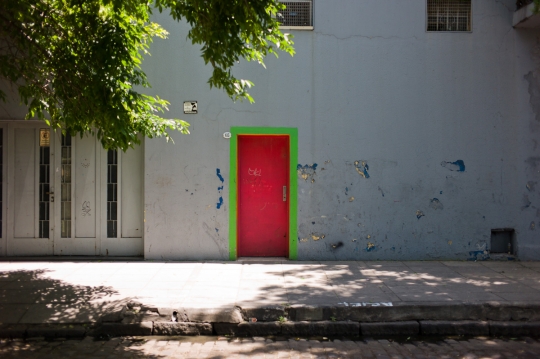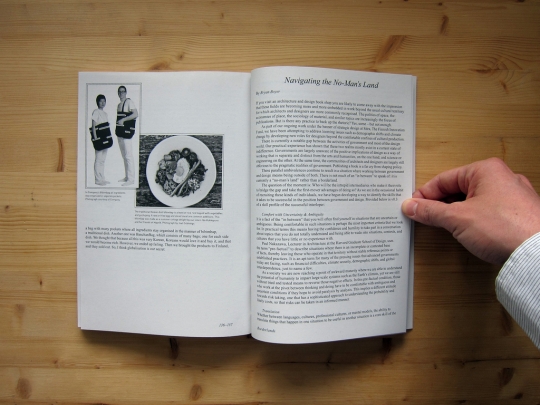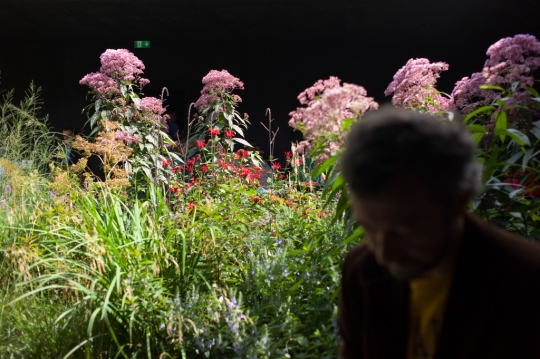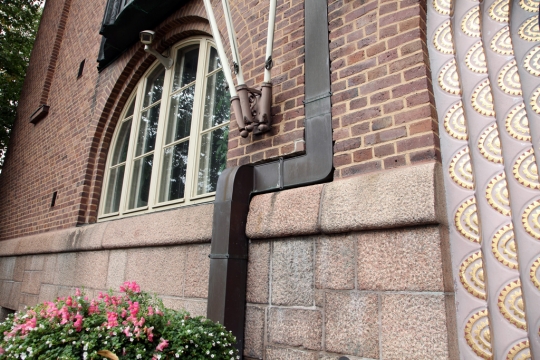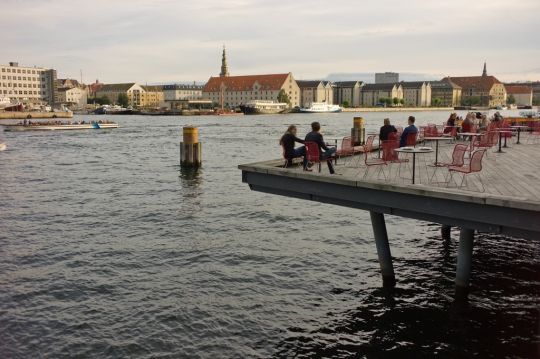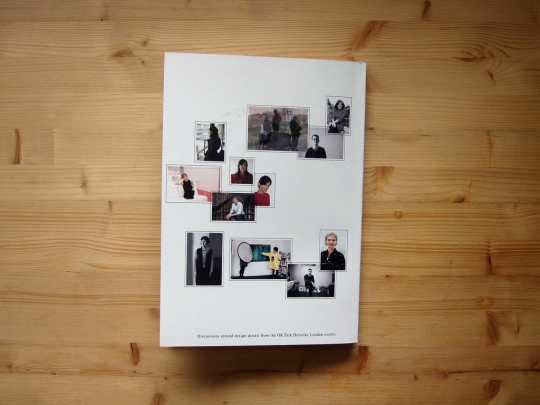All posts by Bryan Boyer
Summer was here, but then it left. We're back to gray and rainy skies. This has given me license to indulge, temporarily, some of the more arcane reaches of our team discourse. It starts here:
We talk a lot about dark matter because it's the focus of our work, really. But the problem with dark matter is that you can't see it and you can't detect it by definition. It's out there shaping the things we can see, but dark matter itself is known to us only by virtue of the effects it creates. Since we can't see the thing, those effects crop up at unexpected moments and in unexpected ways.
This means we need instruments that help us flesh it out, ones that show us the shape of the dark matter, and reveal its boundaries. If we were physicists we would be building space probes, but since we're not we make projects. For the strategic designer, a project (making a thing or interaction) becomes a way to flesh out the unknowns.
Or if we borrow from Joi Ito again, doing projects is often a cheaper way of identifying needs and innovation opportunities than it would be to analyze a situation. So that booklet floating in space becomes this...
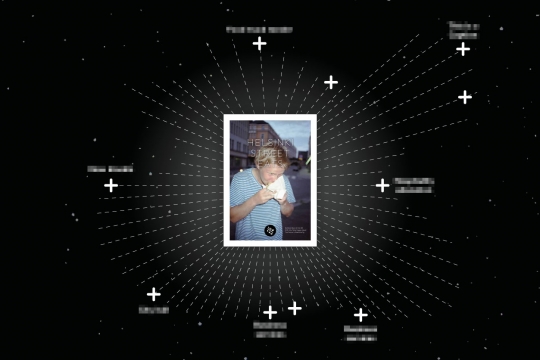
Names blurred out, for the moment
...a token that's launched into as many situations as possible, to bump into as many edges as possible, and eventually send back details of its voyage. Now that our food booklet has been floating around the city for a few months we're building up a decent understanding of the situations it has ended up in—and hopefully the dots it is connecting. It's not the only tool we use, of course. We're also in regular meetings with various stakeholders. But that's the point: the probe/project takes on its own life.
This is (slowly) leading to two bodies of work: one within other institutions, where Sitra can act as a neutral host for shared discussions and decisions. Another in the community, where we hope to be announcing a programme in September which will offer a way around some of the blockages and knotty bits that our space probe has sent us details of.
So, yes, we obsess over the documents, websites, spaces, and other things we're stewarding into the world, but those details are not the source of our motivation nor the locus of ambition.
Some examples:
- 12 floor renovation: enabling a new culture of collaboration at Sitra
- Food booklet: mapping out the diverse field of 'owners' of food business and bureaucracy in Helsinki... helping us define the opportunity space
- Brickstarter as a product: creating concrete discussions about frictions existing in the regulatory & financial sectors and increasing community know-how around civic entrepreneurship
Speaking of Brickstarter, things continue apace. Maija has been doing a good bit of research on other crowdfunding and crowdsourcing initiatives, for example the Avoin Ministeriö or "open parliament" which is set up to receive suggestions for new laws. This is the first in a series of 10-20 summaries of relevant efforts from Finland and elsewhere.
It's great to have an expanded team and the impact of Maija and Kalle is already starting to show.
Marco spent the better part of an afternoon with Sara from the Design Exchange Programme, talking through the strategy for the next couple months. He was also working with the Helsinki Department of Social Services to finalize the selection for the exchangee who will begin working there in August. We'll reveal the name of that lucky individual after the summer holiday.
From his homebase in Boston, Justin has been contributing to the ongoing development of Sitra's sustainable economy thematic area which is under 'construction' at the moment. He has also been in talks with a Boston-based group who's interested in utilizing the Studio model.
On that front, we're officially done with the first edition of 1000 copies and the second edition has arrived. There are some small tweaks, of which my favorite is an adjustment to the page edges in the appendix so it's easier to flip to the each of the individual challenge briefings. There are other minute changes throughout such that if the book had a version number this would be 1.1. We're going to try to get some copies up on Amazon for those of you who've mailed asking about how to get a physical copy.
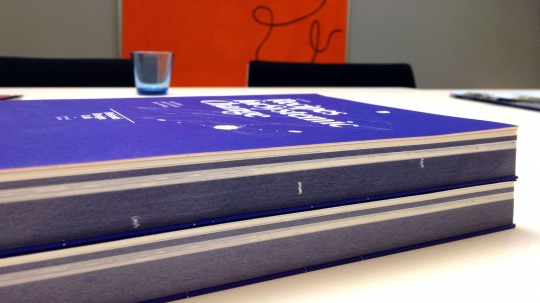
New on top, with the vertical lines making each of the three challenge briefings. Old on bottom.
Otherwise: on the horn with Chicago, Geneva, San Francisco, and London. Partially for HDL 2012 prep but also for other assorted bits.
With July hitting next week we're a bit in scramble mode. Finland more or less shuts down completely for the month, which is both amazing and maddening. If you're on holiday it's great. If you're not, it can be a big impediment to getting work done. One of the open questions for us is whether the renovation of our 12th floor, a project which Dan and I have been spearheading, will actually be completed before our target of August 1.
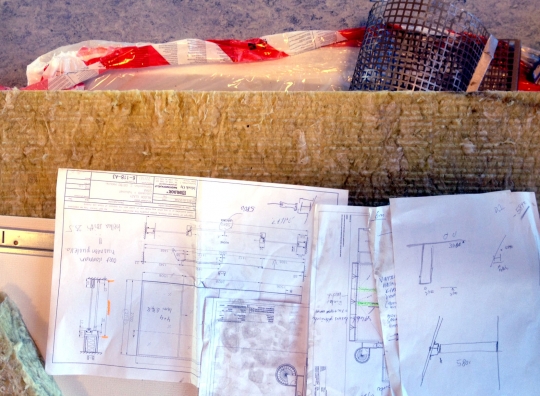
Scenes from a recent meeting on the building site
A strategic design challenge of significant difficulty: convince the Nordics to split their holiday month into shifts so that no more than half a country is away for 2-6 weeks at any given moment.
Right. While some bright young designer is figuring that out, we'll be in various states of holiday! During the next month or so updates will likely dwindle but Maija, Kalle, and I will be holding the fort down while Marco, Justin, and Dan enjoy some well-earned time off.
Hyvää kesää kaikille!
When a weeknote stretches to two weeks, we're flat out. This is a two-week-note. Marco's in Chicago with the mayor, Dan's in Milan giving a lecture at the Politecnico, and Justin's about to board a plane bound for Finland. In Helsinki, Kalle is with the Sitra gardening club planting herbs on the roof of the Sitra tower and I'm here, in my chair, typing this for you.
The Cumulus conference bought a torrent of design educators to town, old and new friends both. We enjoyed seeing Liz Danzico again, a prolific designer, author, educator, and tourer-of-Helsinki. Mariana Amatullo was visiting from Art Center in Pasadena, California where is the director of the Designmatters department. She spent a day and a half doing research for her PhD by interviewing stakeholders in our Design Exchange Programme and grilling us with thoughtful questions. Eduardo Staszowski and Lara Penin from Parsons School of Design Strategies dropped by too, and we had a good conversation about the differences between strategic design practice in a place like Finland which has a strong public sector and somewhere like the US which has a more fragmented landscape. Brenton Caffin was here briefly at the beginning of last week too. This is what the World Design Capital year is like.
With learning in the air, one of the things that popped up in each of these conversations was our position on the practice of strategic design and innovation more broadly. We call it legible practice and I've written up those notes in a separate post:
Doing things in the open is not the best way to help them grow. To encourage scale, we must do work in ways that are inviting, easily read, and digestible.
Dan has ben writing too. He has a book out as part of Stelka Press' inaugural series. It's called Dark Matter and Trojan Horses: a strategic design vocabulary and it rather provocatively argues for...
...A new vocabulary of design, one that needs to be smuggled into the upper echelons of power... Increasingly, effective design means engaging with the messy politics – the “dark matter” – taking place above the designer’s head.
If you're in Moscow on June 18th you can hear about this at his public lecture at Stelka.
Brickstarter continues apace. Right now we have a local web shop coding the first clickable mockup. It will be viewable on the Brickstarter website in due time, but not just yet. We're also reading, reflecting, and interviewing existing projects about their experiences with self-initiated development.
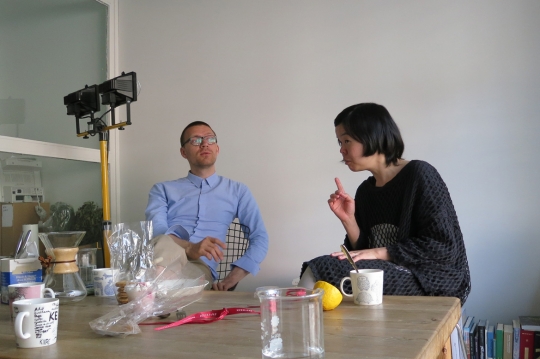
Tuomas Toivonen and Nene Tsuboi telling the tale of their Kulttuurisauna in Merihaka, Helsinki.
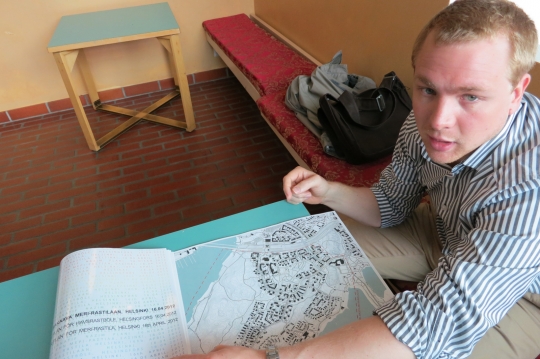
Tristan Hughes explaining a community-developed alternative masterplan proposal for Meri-Rastila.
It's basically impossible to get Kalle to stop talking about food, which is a good thing since that's what he's here to do. During the last Ravintolapäivä he operated a pop-up coffee stand which also served as a community idea collection point, resulting in some telling (and often humorous) drawings. Most of his time is spent wading through city webpages, collecting and sorting information about getting a food business off the ground. This will eventually be part of something we're calling This Is Not A Cookbook (a guide to Everything But The Food?) which will be part of the food entrepreneurship bootcamp we're planning for later this year.
I've been on the horn with groups US and Chile, coordinating a meeting for this summer to dig into two case studies for HDL 2012. It's constant logistics on that front at the moment as I attempt to wrangle diaries of 28 people in five time zones across the total of six case studies we're hoping to pull together. To amuse myself, I tinker with the spreadsheet that keeps all of this straight (and on budget). Two words: conditional formatting.
Marco and Justin are both 110% on Low2No at the moment as some critical decisions get made. On a much smaller scale, we had a few triage meetings about the renovation project that's ongoing in the current Sitra tower. Finland shuts down for all of July, which is a wonderful and maddening fact of the way of life here. This wreaks a special kind of havoc on production timelines and there was some danger that our 12th floor renovation would get pushed until after summer. After some decisive action I think we've narrowly managed to avoid that delay, and we're still currently on track to have the new spaces by August. Hyvää.

Left: the existing space. Right: after basic demolition. Renovation has begun.
Then this happened:
The city has exploded into greens and blossoms as the trees come back to life, dusk and dawn melting into a continuum of tarry daylight. Welcome, summer.
During the past week or so we've been hosted visitors from three continents who are curious about strategic design at Sitra. In each of these discussions we've touched on something that we call "legible practice". I first used the term on this blog less than a year ago, but it worked its way into our daily vocabulary somewhat before that. We use it as a way to split hairs with all the hype around "openness". Open data, open innovation, etc.
At risk of sounding arch, "legibility" has become a core notion of how we think about innovation, or perhaps more specifically public innovation, and this post is an attempt to define the term and describe its value. Very simply, doing things in the open is not the best way to help them grow. To encourage scale, we must do work in ways that are inviting, easily read, and digestible.
Let's hop back to 1994.
The world wide web used to be a very different place. Much of what's available on this website was not possible twenty-some years ago. Few people knew how to make websites in 1994, and there were certainly no schools graduating students who were versed in the subject. Most people learned like I did, from a friend who taught them the basics of HTML and showed them the most important command in the history of the internet: view source.
"View Source" is a command that lets you see the code that makes a webpage work. This is unique to the web—your word processor, for instance, does not allow you to see the source code that makes it tick. That's proprietary code (unless it's open source).
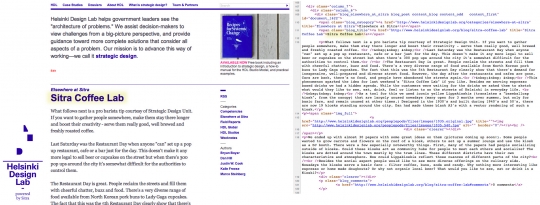
Left: our website. Right: a portion of the code you will see if you view source. I've highlighted a bit of text in both so you can see how one connects to the other.
But the ability to see the web page and the code that manifests it has been built into web browsers since the early days, and liberal use of the command is an invaluable tool for self-learning. HTML is a simple language, so as long as one can access the source code they can usually 'read' it without too much pain. I don't know why someone decided to add "view source" as a feature of the web browser, but it facilitated the spread of knowledge about how to make web pages. Here we unearth the imperative for legible practice.
Not only was the web new and rapidly evolving, but since there was not an in-built stock of Web Experts the group of people who happened to find themselves as members of a community building the web—and simultaneously learning how to build it—were all coming from different backgrounds. A lot of them were computer scientists, but there were also bored architects, distracted social scientists, news junkies, eager business students, and probably more than a few video gamers. The sheer diversity of the community meant that tropes and models from any particular tradition of knowledge could not be relied upon. Tutorials and other learning resources tended towards a more general audience because the community itself was more general in composition. The knowledge base and the community were in flux.
Innovation is in a similar moment of rapid development. The View-source paradigm implies that the more a developing practice enables and supports self-learning, the quicker it can grow and spread despite having a diverse composition. If you want something to go viral, you have to think about how it spreads. Practices tend to be a fair bit more dry than your average animated gif meme, so those of us who are invested in spreading a way of working have to think extra carefully about how they spread. We try to bring this concern into the core of our work.
As a public institution we enjoy the ability to do just about everything in the open, free for others to pick up and build upon. This comes in small gestures, like making our publications available under a Creative Commons Share-Alike license, but openness is not enough. As we aspire to maintain a legible practice, we're in the habit of not just sharing our work, but sharing how and why we do things in a particular way.
To invoke a bit of an infinite loop, this post is an example of what I'm describing, as are the rest of the how-tos. And we're not alone. Friends at Government Digital Services in the UK are conducting their own legible practice, and we would be happy to have other examples posted as comments below.
Other examples include our book In Studio, which features documentation of three studios we hosted side-by-side with a thorough how-to; full documentation of the Low2No competition including brief, process, and outcomes; and the Brickstarter project blog, where we're documenting every aspect of the project's development.
In each instance we are attempting to take a step back from the work itself and describe how we approached the problem as well as the methods, tools, or techniques we used to address it. We do this as an invitation to engage in a discussion about the work and its practices. In an ideal world, everything we produce would come with a "view source" regardless of medium.
The reason that we invest time in sharing in a legible way is twofold. Primarily, we feel that it's important to reflect upon the practices that we're developing, especially at a moment like this where knowledge is productively fluid. Doing so helps us hone our skills. It makes us smarter. Second, making our work legible enhances the likelihood that it will be copied.
An innovation fund is only as useful as it's innovations are influential. And what better way to be influential than to be as easy to copy and build upon as possible? Besides, when we see someone pick up a bit of our work and use it in their own way, we benefit by having our thinking reflected back to us in new ways. When describing practices, that reflecting-back is exactly what scale looks like.
What we learned in #163 is that Berlin has jumped straight to summer while Helsinki is taking its time with spring. A quick update to keep up the tempo, but not as much depth as usual because Dan and I are hosting a visit from the MaRS / WISIR / SIG in about 3 minutes! Edit: I did not make it, so this is being completed after a very good conversation with the Canadians, but you'll have to wait till next week to hear about that one.
In Week 163 Dan, Kali, and I were in Berlin to do some research for Brickstarter looking into the ways that people are working on community engagement and energy infrastructure. Separate things but deeply related, as we suspected, and as we found.
Perhaps surprisingly, amongst the many threads that tied these two together was the role of narrative. As Anna Poblocka of Eclareon put it, Germany's ability to create a narrative around the move towards renewable energy is an important part of their ability to aggressively pursue this transformation. The next day Dieter Genske expanded this notion by introducing us to the linguistics of this particular narrative which is called energiewende in German.
Use of the word "wende" connects the renewables effort with the importance and scale of another significant act, the reunification of Germany after the wall came down. This is an example of the way that we talk about a specific change helps prime conversation to be positive or negative, empowering or overwhelming, one that preferences the status quo as immutable or sees it as merely a current-state. And while linguistics is a soft topic in comparison to the significant rigidity of (current) energy infrastructure, it's a powerful bit of soft stuff. Narrative is the connective tissue of systemic change.
The Finnish experience maps onto Dieter's point very well, but in reverse. Whereas Germany has created a narrative of change-by-renewable-energy, big decisions about Finland's energy future two years ago relied on narratives of past success to rouse political will in support of maintaining nuclear and propping up traditional industries such as pulp and paper manufacturing. Today, small scale energy production in Finland is stymied by the overhead of permitting, which is designed for nuclear-scale plants, and a limited community of willing investors.
The way Robert Brückmann of Eclareon explained the German experience to date, Merkel's narrative worked in parallel with opportunities that could be acted on directly by individuals and communities. Well-designed feed-in tariffs made renewable energy a safe investment that has snowballed as more people take advantage of the opportunities in the marketplace. After two days of discussion around the growth of renewable energy I began to imagine in my head the German case as an Olympics logo of interlocking virtuous cycles: narrative and discrete opportunity, government and market, individual and community, environment and economic development, short term gain and long term security.
More on all of this in a future Brickstarter.org post but we came back from Germany with new insights into the importance of combined action on the level of large-scale cultural debate and discussion paired with discrete and delicate tinkering within the dark matter of our institutions.
Taking these findings up a level of abstraction and mapping it onto our work in Helsinki, we want to understand cultures of decision making better so that we can pursue innovation from two angles: first, by inflecting public debate towards a perspective of shared-value and shared decisions. Second, by de-risking innovative acts on an individual level.
Internally we joke about this as the glue and the tiny hammer. We're searching for ways to glue together things that have been silo'd or separated, and for ways to carefully begin to crack into big, opaque boxes (like most institutions).
While in Berlin Deiter shared his insights during a walking tour of his own neighborhood. Dan wrote it up on his site. How does he find the time to do that so thoroughly?
As a last note for Berlin, we also had a good visit with Neighborhood Labs which one of us will write up soon for the Brickstarter site. It was a compact but excellent excursion.

One of Neighborhood Labs' findings is that workshops garner a better turnout when waffles are on offer. That's a tactic I can support. Source: Neighborhood-Labs.org
Brickstarter is making its way into the wider world as well: a post at Design Observer that has a good conversation going in the comments and there's another one on the Atlantic Cities blog. We're very happy to see the discussion spreading bit by bit. More of this, please!
Quick hits:
Mike Monteiro recently wrote a good book for designers entitled Design Is A Job. It's geared for web designers, mostly, but relevant for others too. Actually, it's a useful book for anyone who is uncomfortable dealing with contracts, lawyers, management, and other business basics in the context of practice which is as much qualitative as it is quantitative.
On the other side of the Atlantic, the NYT graphics team have set up a blog that reveals their process behind some of the graphics featured in the paper and online.
This side of the Atlantic, The London Olympics have gone a bit appallingly off the deep end in an attempt to keep their sponsors happy.
Lingering in London, MindLab and Nesta have recently concluded a three month collaboration which yielded, amongst other things, a nice little video about the work they did together.
Since the audio's a bit hard to hear, a snippet from Philip Colligan:
I think we should design all public services with people, not do public service to people. So it's about changing the way we think about delivering outcomes. Not about professionals giving service to people, but defining outcomes with people, and using all the resources available to us to deliver those outcomes.
And finally, it's not often that we have the wherewithal to post here before an event happens, but we do have two events coming up next week.
Friday May 18th: Marcus Westbury, of Renew Australia fame, will be here in Helsinki to give a public talk about his work revitalizing disused parts of the city. Dan has been putting this together with Tommi Laitio of Demos. Details are on Facebook. I'm shattered to miss it, but I expect to hear all about it via Twitter.
Saturday May 19th: I will be in New York to take part in New Finnish Design City, an ICFF satellite event. Friends of HDL Q&A are curating three days of panel discussions and workshops which you can read about here. I'll be sharing a panel with Dong-Ping Wong and Colleen Macklin about using design to framing the right questions.
And in honor of Maurice Sendak who passed away this week: Goodnight, Week 163.
As I return to Finland after some time in the US I'm writing in the sky, but not skywriting. Does seem like fun though, to fly in big broad strokes and puff-puff-puff slogans out of smoke with the horizon as a metric. We are not doing that aboard AY006 from JFK to HEL. Nothing but strong tailwinds and a full laptop battery.
I've been on the east coast of the US, mostly in NYC and Washington, DC. In New York my time was spent talking to groups like the +Pool folks and trying to understand how community projects take advantage of online fora. More about that on the Brickstarter project page, as Dan mentioned previously.
I've also been meeting new people, which is always nice. First was Hilary Hoeber, Senior Portfolio Lead of public sector work at IDEO. Over the past few years one of the questions we've been grappling with is whether or not there's a viable role for consultants in bringing design to the public sector in the long term. This might sound like a crazy question, but a challenge that all organizations struggle with, and particularly public bodies, is to execute on the good ideas that they have.
The "give and go" stereotype of consultancy leaves the clients to muddle through execution of ideas that well-paid-someones drop on their desk. Stewardship is part of the design process, which can make design consultancy a tricky thing. IDEO are concerned about this 'delivery gap', and have been helping their clients close the gap pairing project work with organizational coaching and transformation efforts as a way to address the issue. More on IDEO's public sector projects in Metropolis Magazine.
There's a similarity here to our Design Exchange Programme. As we place designers into public sector organizations we're essentially creating a context where the org and their new designer can work together for a year to both deliver a discrete project, but also begin the slower and more fundamental work of opening up to new cultures (on both sides) and translating or exchanging ways of working through the medium of a discrete project collaboration.
Beneath the clattering deck of the Brooklyn Bridge I met Chelsea Mauldin, who is Executive Director of the Public Policy Lab, to learn about the developments of public sector service design in the US. Her organization hosts a number of fellowships that enable designers to allocate part of their time to work for different city departments and agencies.
Rather than full time placements, these fellowships are part time. Whereas our designers are hired into the host organization as part of their payroll, the PPL fellowships are 'work for hire' provided to the host but paid for by PPL. This is one of the options we debated too, so it will be nice to compare notes with PPL in a year or two and see how the different approaches worked out. The Public Policy Lab is also working with Parsons University to create opportunities for students to be involved in the early stage analysis work. Good stuff.
To round out a hattrick of good people, I bumped into Clay Shirky at a social gathering, who I've met briefly before but never had a chance to properly talk with. I'm a big fan of Clay's extensive writing, so I was quite happy, but this was also auspicious since I had recently listened to a panel that he participated in and I could quiz him about it further. During the Hacking Society panel Clay postulated that in the online world, one-vote-per-person style voting does not really work, and instead the three primary forms of expressing personal desire as part of an online community are:
- Forking: geek for using someone elses' work as a starting point for your own and therefore causing a fork in the history of that thing or idea;
- Collaborative editing: such as Wikipedia where authorship is essentially subsumed by the mash of changes and people making them;
- Karma: which is a way to grant users of a system an increasing level of capabilities/privleges the more they are deemed to be a positive addition to the site, through some combination of patient waiting and constructive commenting.
My gut reaction to Clay's point was to cling to the sacred democratic vote, but with further reflection I'm starting to see his point. The cost of communication online (in time, money, just about every metric) is so much 'cheaper' than it ever has been that online communities tend towards profusion more than scarcity. Our attempts to develop Brickstarter as a tool for 21st century community decision making will take this into account. Dan and I will likely spend some part of the upcoming week debating these points and trying to map whatever conclusions we come up with onto the Brickstarter work.
On that front, he has been working on mockups stemming from the numerous conversations we've had up till now. Good to get the ideas onto paper and I'm happy to let him do the heavy lifting of translating our pile of notebook scribbles into something sensible!
Dan and Kali have been busy while I've been away: Meetings with Finn Williams about recent changes (read: simplified and sane) to the planning legislation in the UK as well as the clear presentation of such; Akseli Tuomisto, a lakimies (literally "law man") with Castrén and Snellman Assocates whose thesis was on different models of wind power development across the nordic region and in Germany; as well as chats with Ossi K. and Karo L. here at Sitra about linking up Brickstarter with their work on open data. This was a week of Dark Matter for Brickstarter.
Marco was deep in Design Management Institute territory as co-chair of their event this past week. Besides making sure the event flowed well, he was also catching up with familiar faces like Darrel Rhea and Christian Bason.
Due to the cruel illogic of logistics, Justin and I switched places. While I was in the US, he was in Amsterdam participating in the 12th European Forum on Eco-Innovation hosted by the European Commission. Low2No was the topic, naturally, and in particular the work that goes into creating an ecosystem of innovation and opportunity around a specific nexus like one single block. From time to time we talk about this as the "trojan horse" approach to policy and market creation, or using projects to prototype policy.
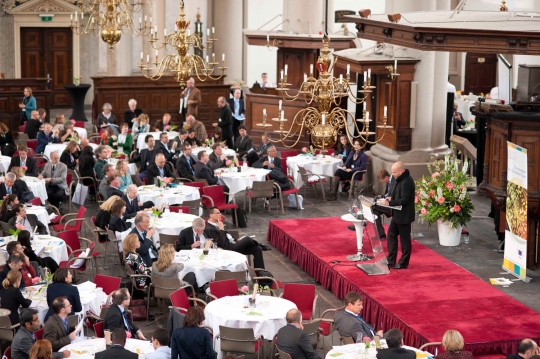
Justin sharing Low2No with the EC. Source: Europa.eu
At the Global Impact Economy Forum in DC Secretary Clinton announced a new partnership that will focus, amongst other things, on making it easier to create sustainable cities, particularly in developing economies. I was there to share our Low2No experience in the context of the question: how do public and private sectors work together to foster shared-value investment in the built environment?
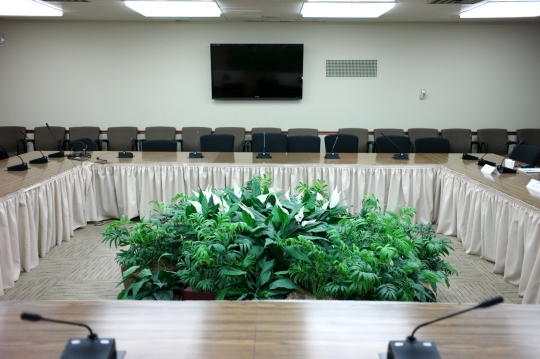
This was the most handsome patch of trapped plants I saw at the State Dept.
David Wood did an excellent job moderating our panel. I was the pipsqueak in a row of heavy-hitters as we compared projects from the block scale of Low2No, up to the entire city of Songdo, South Korea, and then infrastructure efforts of CDG in Morocco. The core of the conversation was summed up well in a comment from a South American government official who will remain nameless, as relayed by fellow panelist Stewart Sarkozy-Banoczy: I can find money to build housing, but how to I deliver all the other aspects that make a thriving community? The traditional capital investment is one thing, but finding the ability to invest in the broader ecosystem of factors that contribute to the ultimate sustainability—or not—of a community is now the challenge.
The approach we're taking with Low2No is to consider the building as situated within a larger spectrum of activities that range from the dark matter work of lobbying for (and co-authoring) new codes & regulations, exploring finacing and operational models, developing programmes to spur low-carbon entrepreneurship and citizenship, and so forth. Coming on almost 4 years into the Low2No experience, we have a pretty solid idea of how to comission and design sustainable urban environments in this interconnected way. Delivery is another slog unto itself, but one that we're happy to be in the middle of at the moment.
It was a solid event that covered a lot of ground, often times deep in the nitty-gritty of finance where I struggled to keep up (my favorite kind). Because I know that the internet loves lists, and I'm not one to disappoint, the messages I kept hearing at the event were:
- Systemic from the start: initiatives should not be done in an ad-hoc way to get them off the ground and then redesigned for scale later. The up-front strategic work should take into account the possibility/mandate of scale from the very beginning and use this as an advantage. In my own words, I would articulate this as "design every platform as a product and every product as a platform"
- Data drives the market: there are still big opportunities for anyone who can provide data (or other comparative mechanisms) that simplifies the task of comparing a variety of options, be it which charity to give money toor which ship to hire for your intercontinental logistics, etc. Jagir Shah gave one potent example: the Carbon War Room began publishing fuel efficiecency data for ships. The availability of this data natrually fed into the exsting data-crunching machines of insurance adjusters and other analysts, effectively raising the price of fuel-inefficient ships. In other words, data doesn't have to be extensive, but it should be operative and useful for the right decisions.
- Collaboration is still hard: building up enough trust to do things differently, to invest in social impact, for example, still takes time. It was encouraging to see many of the world's large banks at the forum to have that kind of scale in the room, but more than anything their participation and movement towards adding social impact products to their suite of offerings is an important act of signaling to the market culture. As we are all making tactical efforts to deliver projects and make deals, we should also acknowledge head-on the broader cultural shifts in risk and trust, and the way that our various cultures of decision-making model these. Multi-disciplinary teams are able to internalize—and appropriately respond to—some degree of these different cultures, giving them a leg up.
- Reality is still messy: contexts change and plans change. An organization's ability to cope with change (both fast and slow) is still what determines its success. Particularly in the case of systemic change, where the full extent of needs and opportunities are in continual evolution (see point #1!), bouncing between the messy details of specific situations and the smooth abstraction of the 30k view is a useful practice, particularly when the problem at hand is without precedent.
- We still need first movers: Anyone who has watched as a potential match funded grant goes unmatched and unfunded knows how painful it can be to have the promise of funding but still come up empty handed. Right now is a similar moment. there's a developing interest in social impact investments, but strident first movers are still needed. As the investment community (and organizations like Sitra!) are able to better evaluate (see points #1&2) and build relationships with (points #3&4) social impact organizations/projects we will see the sector flourish. Who's ready to take the first leap?
Posts tagged with "How-To" contain reflections on designing, organizing, and operating the HDL Studios. This post was originally drafted as part of our In Studio book but was cut and has been lingering in draft mode ever since. As we're now spending more helping other public sector organizations boot up internal design capabilities the topic became relevant again. So here we go!
—
In a previous post we talked about Transferring Knowledge with regards to stakeholders who are outside of your organization. In this post I'd like to talk about the flip side of that: how knowledge is transferred internally. Or maybe it's more basic. How does one build commitment within their own organization?
A bit of explanation is due. Strategic design was a new thing at Sitra when we began preparing for HDL 2010. In fact, before Marco came to Sitra as the Director of Strategic Design the position didn't exist. For us the stakes of the studio were double—they had to serve a need for the external stakeholders while also helping to demonstrate to our colleagues here at Sitra what design is, what it looks like, and what benefits a design process can yield. The worst thing that could happen was that we end up as an 'internal service bureau,' offering turnkey services to disinterested 'clients.'
In fleshing out this aspect of the Studios we took a slightly oddball approach and sought to build internal partnerships that would yield financial (€€€), social (networks), and human capital (know-how). In other words, we thought of ourselves as a startup looking for seed funding within the broader umbrella of Sitra.
Financial capital
Money is always useful when beginning a project, but the motivations for seeking internal 'investment' go a bit deeper—after all, this is a question of moving money around internal accounting buckets, so it's mostly an imagined barrier. Money may be a flawed symbol of commitment, but it's a convenient one.
The reason we asked that our partners in the Public Leadership and Management Programme and the Energy Programmes to contribute to HDL studio budget was to make our shared commitment more tangible in the early phases of the project, when design was still mostly a magical black box for most of Sitra. It was a leap of faith that we're very thankful for!
Formalizing the partnership by re-allocating funds served as a reminder of the shared vision that we were developing. In a public organization like Sitra the accounting system is robust, requiring diligent structuring and sign offs, so we turned this into an asset by using the 'gatekeeping' nature of the accounting system as a way to regularly revisit our shared commitment both verbally and in writing.
Social Capital
With a bit of skin in the game, our internal partners also had increased incentive to be personally invested in the Studios. The first evidence of this deeper level of interest came through the sharing of networks. For each of the studios we conducted extensive research to create the challenge briefing, organized a day of field trips for the studio members, and brought a handful of guest speakers. This amounted to a significant network-building effort, especially considering that our knowledge and connections in the areas of education and ageing were limited at the outset.
We were obsessive about quality because the studio was limited to a one week on-the-ground window of opportunity, there wasn't a single minute to waste. In practical terms this translated to thorough vetting of all speakers and guests under consideration for the Studios. Our internal partnerships were instrumental in helping build long lists of possible studio members and guests, as well as making personal introductions and helping start those relationships off on the right foot.
In return, the promise that we made was to help the programmes develop their own networks. Since we were out in the field talking to people on a more or less daily basis, it was easy for Marco and I to keep in mind the needs of the programmes and make connections where they seemed valuable.
Looking back over the invite lists for each of the studios, it's clear that each of them is the result of a deep meshing of the various personal and professional networks within Sitra—and richer because of it. By using the broader networks as the basis for our recruiting we were able to introduce productive overlaps between studio members, guests, and others involved which would not have been possible with our own HDL network alone.
Human capital
Having the partner programmes on board with the Studios added resilience during crunch points when we had acute needs for extra help. For instance, being able to get an extra pair of eyeballs to review the challenge briefings at various stages of their creation was very helpful. This also served as an opportunity for our partners to be personally involved in the process, seeing for themselves how key parts of the design process are developed and fine tuned, and hopefully to take some of that experience back to their own teams. There's a delicate balance to be struck between asking too little of your partners and overwhelming them with requests. At the moment we don't have any grand insights into what that point is, other than to say you'll see it on the face of your coworkers when you're about to topple the balance!
Being Realistic
Given that there was no precedent for design within the organization, the level of support and trust that has been afforded to HDL within Sitra is remarkable. Starting from scratch, we knew that the Studios would be a good opportunity to help our leadership see for themselves what strategic design is all about, but we also knew that we had to be realistic about how much of their time we could hog. Everyone has packed schedules, and for top leadership that's doubly so.
For many reasons we are averse to memos and reports. Particularly when dealing with a topic such as strategic design, which can be quite abstract, we knew from the start that it's more productive to have conversations than put things immediately into writing. As much as possible we tried to create opportunities for in-house leadership to visit with Studio, to see it for themselves, and to hear from the Studio members what the experience was like.
On the other hand, we also had to be realistic. What's the minimal involvement that would be useful? Two or three brief visits each from a couple key individuals over the course of the entire Studio experience was effective in generating a deeper level of in-house understanding. As much as possible, we encouraged these visits to occur during active times (like the final jury discussions) to maximize their impact.
Making (and taking) Time
Having built strategic design at Sitra and the HDL Studios with a combination of financial, social, and human capital on a hunch that all three would be needed, this combo only becomes more critical the longer we work on these issues. As Sitra has now been practicing strategic design for coming on four years, the deep importance of strong partnerships—internal and external—can only be underscored.
Perhaps the reason for this is quite simple: partnerships take time. The longer we spent working with our internal partners the more we see saw strategic design taking root within Sitra. Patience and persistence might be the most important kinds of capital we have.
Logistics were on the docket this week. Amongst other things, we've been finalizing some hirings that have been in the pipeline for a long while and laying down a bit of structure for the three month run-up to summer. This includes a fair bit of calendaring to make sure that our various travel schedules are well coordinated, especially in light of the new interns joining us and various events in town, such as the DMI conference which Marco is co-chairing.
Are you an aspiring strategic designer looking for a place to apply your talents? This week we officially launched our second Design Exchange placement opportunity with the Helsinki department of Social Services. Apply here if you're interested, and please help us spread the word if you know someone who would be a good fit.
On the subject of interns, Mr. Seungho Lee holds the honor of being the very first HDL intern and he has recently completed a publication entitled Beef Finland 2012 as part of his Masters of Arts coursework at Aalto University. Seungho has focused on constructing a briefing to frame the question of production and consumption of beef in Finland (as you may suspect from the title). We're glad to see that his time with us contributed to his own work and thinking, and the newspaper is a good read.
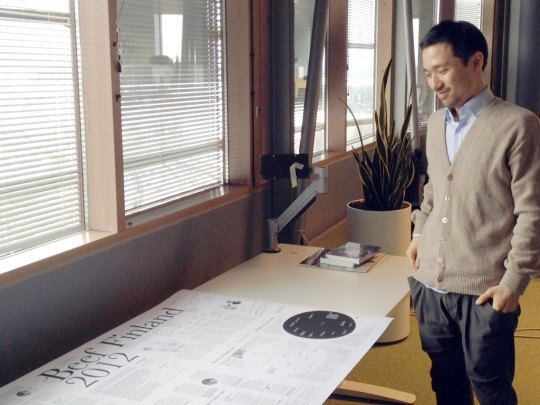
Seungho stopped by to drop off some copies of his thesis newspaper.
Our own focus on food has been a bit dormant this week. Glancing at the revision history of a shared one-pager on our Basecamp site it looks like there have only been a few nibbles since the last workshop. It's to be expected, though, and our next internal workshop on the food work is coming up this week. Workshop one was about putting some brackets around the concept, audience, content, and timeline for the programme we're looking to develop and it ended with a draft one pager. Workshop two will take the one-pager as a starting point and expand it into draft project plan.
We're taking a slightly different tack with Brickstarter. Because of the relatively high pace of global innovation around Brickstarter-like topics at the moment, we've decided to play that project out in public by sharing our research and eventually product development on the blog. Dan and I ended Week 159 by noting some immediate to-dos. Top of the list from a product design perspective: personas and use cases. We also continue to scour the countryside for appropriate NIMBY-potential case studies that we can sketch in code with.
Kali and I met with a gentleman who has been researching wind energy in Finland which was helpful in identifying further avenues for sourcing potential case studies. We also spent some time with Neste Oil in Porvoo, quizzing them about how they interact with the communities who live near their two Finnish refineries and are understandably curious about what's going on with their rather industrial neighbor. On the other end of the scale, we also had a moment to visit a group of designers, artists, and concerned citizens who are developing ideas for Baana, the sunken rail line that Dan wrote about previously.
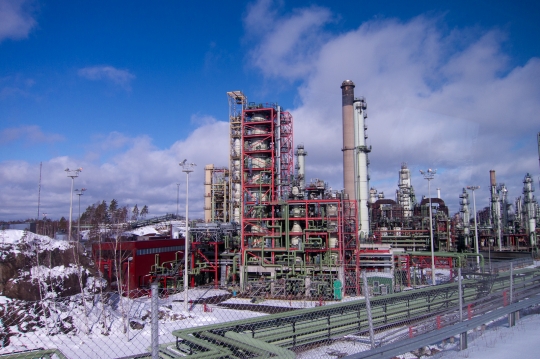
A small corner of Neste's 1300 hectares in Porvoo.
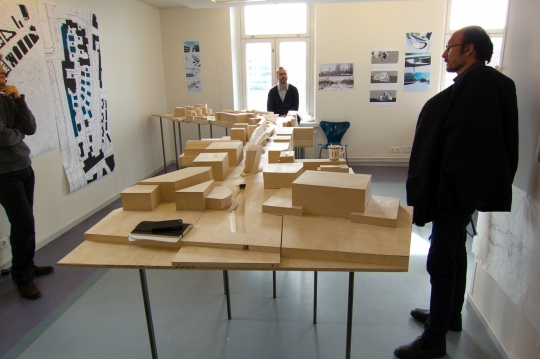
The atelier of a group developing an expanded field of options for the Baana site.
Developing Brickstarter in public is also a way for us to demonstrate what a project-oriented way of working looks, feels, and sounds like as Sitra continues to move towards a new operational model. In that light, we're taking a play from our colleague Karoliina Luoto who managed the development of the newish Sitra.fi website in a very public way via a separate project blog.
As part of our internal development work we've also been coordinating the renovation of one of the floors of the Sitra tower. When it's completed later this year, the new space will give us more project spaces, which we desperately need. And what's a project space, you ask? It starts with a large table and as much whiteboard space as you can muster. Beyond that we're looking for a space which invites ad-hoc meetings, one that communicates a casual professionalism, and one can be flexible with the ebb and flow of work through our organization. We'll dedicate more time to these questions in a future post when there's something more to show!
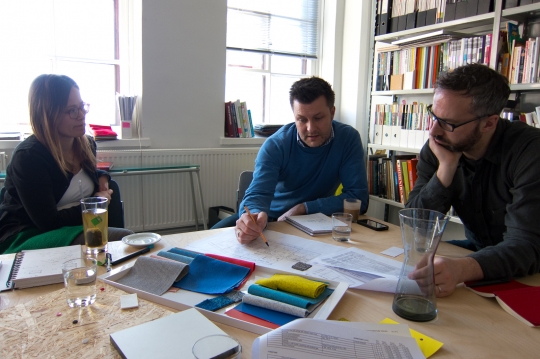
Helka and Jukka from KOKO3 lead us through their proposal for the new floor at Sitra.

The switch to open floors will be a big step for Sitra, but people have been courageous so far in considering the change.
Technically it was two weeks ago, but since we're on the topic of offices, recently I had the pleasure of visiting Marimekko whose entire operation—design, sales, marketing, production—are housed in one building and have been since the 1960s. Doing so allows them exactly the kind of effects we're seeking to maximize: collaboration, flexibility, and focus.
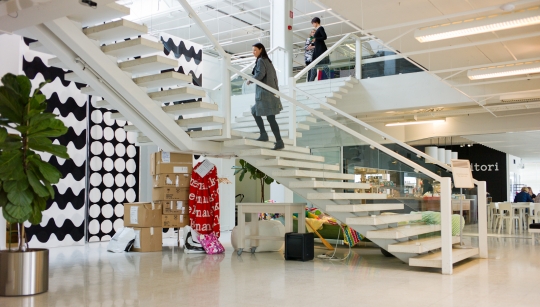
A grand stair in the entrance acts as a collection point for chance encounters as people come and go.

Jeremiah, one of our design leads from the Synergize Finland Studios, was kind enough to give me a tour of the operation.

As you might expect from the Marimekko factory, it's filled with delights.
Embedded in our internal efforts is a transition towards a Sitra culture that is more explicit about what we do, how we do it, and why we do it. With that in mind we enjoyed the ten Design Principles of the UK's Government Digital Service both for its content (many of the same rules apply in the Strategic Design Unit) and its clear and simple presentation.
Today we're also curious, are you as obsessed with Borgen as our whole team has been lately?
We are very excited to announce that the Design Exchange Programme is now seeking applicants for our second placement opportunity. This time the selected candidate will work in the Helsinki Department of Social Services for a year, helping to develop a culture of service design.
For more details, see the job posting.
Week 157, and a touch of 158 if we're being honest, was mostly about getting things out the door. Almost by coincidence, we finally launched new websites for the Design Exchange Programme and Brickstarter, made some cosmetic tweaks to this very website, and published a 98 page book on street food in Helsinki. It was a lot, but a long time coming!
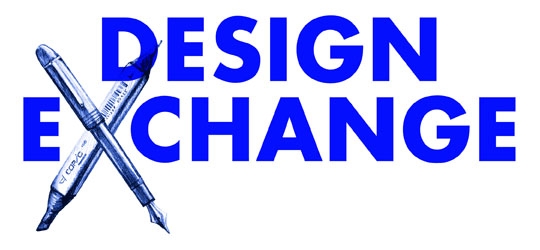
The Design Exchange (DEP) website is where you can track the progress of our embedded designers. The goal of the DEP is to move one step closer to policy by design. This entails enhancing the capabilities of the public sector: new abilities to frame problems, iterate solutions, seek feedback, and communicate clearly.
There's a quick intro to the programme and I've also shared a bit of the background of how the DEP came to be. When I look through our files on that topic, they stretch back to late July 2010. Although we had discussed it internally as a 'what-if', the concept first appeared in the Clues cards (especially the one about Tailor Made Municipal Services) and came up again during the Ageing Studio discussions.
Perhaps it's no surprise that Petri Lehto, a member of the Ageing Studio, has been one of the driving forces behind bringing the DEP to life and we're grateful for his collaboration, as well as that of the many other people involved at our partner organizations.
At the moment we have only one placement up and running, with Sara Ikävalko working at the city of Lahti to develop a new participatory process for a competition they are hosting there.
We're getting closer to having more placement opportunities open. When that happens we'll advertise them here on the HDL site as well as the Design Exchange site, so be sure to check back if you're a Finnish-speaking designer interested in working in the public sector.
In a nice twist of symmetrical history, the same week that we launch a project which took cues and clues from friends at MindLab, saw another group, the MaRS Discovery District in Toronto, looking to HDL for advice on their own explorations of a new lab. The report is quite informative, and we're happy to be a reference as they look for the best way to put "complexity, networked collaboration and design" to good use.
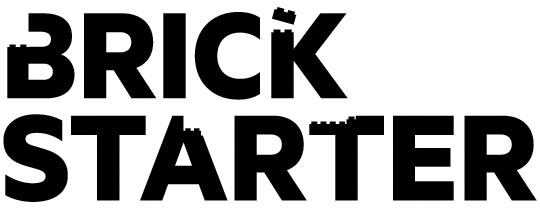
Next up was Brickstarter, a project we're developing that seeks ways to turn NIMBY into YIMBY (yes in my backyard). How might we reorient community action from no full-stop to "no, but how about..." or even "I'd really like...!"
As Dan explains in the introductory blog post, our thinking and work on Brickstarter is beginning to pick up, so we needed a place to bind these thoughts together into a big ball of ideas. The Brickstarter blog is a mix of notes from our field trips, quick dives into terms and concepts, and eventually some case study research. Some themes:
Community decision-making; new engagement tools; long-term investment in sustainable infrastructure; participation and representation; prototyping as research, iteration as planning; user-centred redesign of governance and legislation; different relationships between citizens, businesses and governance; potentially even prototypes of political systems...
To give you a concrete example, What's different about this shady courtyard on Tarkk'ampujankatu...
And this one on Tehtaankatu...?
It's hard to see with the trees full of life in the summer, but the biggest difference between these two courtyards is that features a garden and the other a parking lot. Otherwise they're about the same size, in the same neighborhood, and have the same solar orientation. They're essetially the same from a contextual point of view, yet one group of owners has decided to use the space for parking and another for a garden.
With Brickstarter we are trying to understand how these decisions get made, and eventually to developing a platform that enables them to be made with greater levels of participation. Why? Because we think that new tools will allow communities to make decisions like this with higher social equity, in a less devisive manner than typical NIMBY dynamics, and with heightened attention to opportunities that consider the long-term.
Recently there has been an uptick of interest in 'meanwhile' or temporary usage of sites. We see this as positive development, and in a certain way Brickstarter is our attempt to look at how the verve of these grassroots efforts can be grafted onto the institutions that shape everyday life. One of our hypotheses at the moment is that there is a missing interface to government. What would that look like? Figuring it out will require our usual dip into strategy, but it’s likely to also involve building product(s).

Helsinki Street Eats, the book which was our third release this week, has similar ambitions. We wrote the book to begin asking questions about the extremely positive developments of Ravintolapäivä and the Camionette. On it’s own a festival like Ravintolapäivä is a nice urban experience that happens a few days a year, but the next morning it's gone without a trace. With a bit of work on the dark matter, these experiments can be looked at anew as prototypes of a future regulatory, business, and social context.
The book was a way to crack open that question, and now we’re slowly but surely sketching out a way for those ideas to take root. If you’re the type who is into books and publications, I wrote a post about the ways we experimented with print-on-demand in the production of Helsinki Street Eats.
Otherwise there’s not much to say beyond get your copy here!
Beyond these launches, we're still working on internal projects. Parts of that effort is about to wind up soon, which is good because we have our hands full at the moment—as you can probably tell!
This post is part Low2No project update and part design how-to delving into simple customization of the Print On Demand books as a format. First, the update. Low2No is about creating pathways for our current, high carbon economy and culture to transition to a neutral carbon footprint. An important aspect of that is what and how we eat.
Especially for a place with the northern climate and high meat & dairy consumption habits of Finland, food production and consumption are key concerns when you're interested in carbon.

Helsinki Street Eats, a new book about street food as a vehicle for innovation
We've been looking at street eats as an example of "everyday food", the stuff that's close at hand such as late night snacks, kiosks, bakeries, food trucks, and the like. In fact, let's take a slightly modified excerpt from the Low2No site:
Street food describes systems of everyday life. In its sheer everydayness we discover attitudes to public space, cultural diversity, health, regulation and governance, our habits and rituals, logistics and waste, and more. What we find most interesting is the intersection of all of these aspects: how they come to a balance and tenor that enables and encourages specific kind of outcomes in a specific place and time.
Street food can be an integral part of our public life, our civic spaces, our streets, our neighbourhoods. Street food can help us articulate our own culture, as well as enriching it by absorbing diverse influences. And it can enable innovation at an accelerated pace by offering a lower-risk environment for experimentation.
Street food can do all of these things, but it doesn't necessarily.
This book is an attempt to unpack what's working and what isn't in Helsinki, and sketch out some trajectories as to where it could go next.
The full 98 page book is available for download, and you will also find links on that page to buy a printed copy from Lulu.com, a print-on-demand publishing service.
Readers of this blog may already know that we're a bit obsessed with formats. We are given to nerding out on the minutiae of publishing online and in print, which is probably no surprise since as a team we have direct experience in producing magazines, newspapers, books, radio, websites, buildings, and various other media. (Aside: this makes us an unusual public sector team, to say the least.)
It's nice to go all-in on a book and obsess over every tiny detail from writing to printing, as we did the In Studio: Recipes for Systemic Change. With this most recent publication on Street Food we were interested in exploring a format that would be more ephemeral. One that could change and evolve as our work on the topic does; a paper document that could have different version numbers; and one that felt easier and more casual. We also wanted to self-service distribution model.
Print-on-demand seemed to fit the bill, offering flexibility along most of those axes, but print-on-demand books tend to be… dull. The easiness of the format shines through. How could a print-on-demand book be a bit more special—could we find some relish to serve it up with?
People have been hacking print-on-demand to do some interesting stuff, but it seems to be all on the software side. We wanted to hack the print in print-on-demand. Lulu hacking.
Surprisingly, there still does not seem to be an option that surpasses Lulu. I say surprisingly because the Lulu experience is quite terrible. Their tools are limited and the workflow is awkward. As one small example, you can set the country of publication only after you've published a book. According to Lulu all published books apparently come from the United States, at least at first. Blurb is another popular print-on-demand service and their quality is higher, but their document sizes are limited and it's mostly for photo books.
Over the past months Dan and I sketched lots of (sometimes ridiculous) ideas, including at one point the thought of laser cutting Lulu books into new shapes. Stepping back from that precipice, we've settled on a basic combination: a full-color 98 page print-on-demand book paired with an offset print fold-out poster, all bound together with a rubber band.
The books come straight from Lulu and the rubber bands can be found at any office supply shop and countless online sources so that only leaves the poster for us to source through a traditional print house.
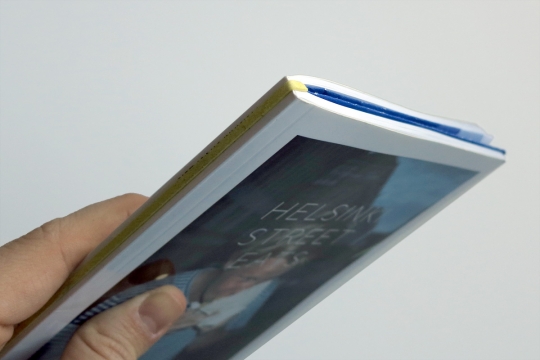
Usually the spine of a print-on-demand book is a sore point because the alignment can be unpredictable. The rubber band nicely obscures alignment errors.
The poster is designed to fold down into A5 format so that it fits neatly within the book. Right now we're waiting for the actual posters to come back from the print house, but they will be printed on 60gsm paper which means they're a good 25% thinner than standard printer paper, making them easier to fold up.
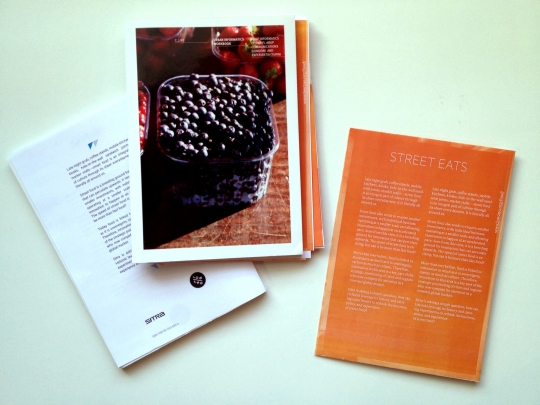
Various paper prototypes using the office printer and tape to craft posters and an old Lulu book as a stand-in.
The binding pushes the poster out a few millimeters which creates a natural 'tab'. We discovered this on accident while making a prototype, but it was a nice discovery since we wanted to have a quick way to thumb to the Finnish language summary.
When we give out copies of the book they'll come with the poster and rubber band, but if you order a copy online or download the PDF you'll find the contents of the poster included as normal pages.
Because print-on-demand does not have any setup costs or minimum print runs, we can also offer the same book in multiple flavors. As we started working on the cover it was hard to settle on a single image, so we decided to let the user decide. There are four copies of the book available for download/print. All of the contents are the same, but you get to pick your own cover. My favorite features a scene of Kauppatori from 1901. What's yours?

Clockwise from top left: Ravintolapäivä August 21, 2011; 'The Great Saturday Market' at Kauppatori in 1901; Jaskan Grilli in August, 2011; Outside Stockmann in 1959.
Although the writing and research for this project has been on slow burn for about nine months now, the production of the book was pretty quick. Dan and I did all of the work in house, tossing files back and forth with occasional but insightful comments from Marco and Justin. One of the positive side effects of taking longer than expected to deliver this project was the opportunity to shoot extra photos around town, so it's richly illustrated.
The larger team included Ville and Nuppu of WeVolve on interviews and research; an investigation into the supply chain and geography of a typical hodari (hotdog) by Aalto University student Tea Tonnov; photography by the indefatigable Kaarle Hurtig; and tips and ciritique from too many people to mention.
Hope you enjoy! Hyvää ruokaa!
That pile of snow from last week? Still there. And not only that, it's snowing as I type, so the thing is growing.
Dan remarked the other day that during this time of year it feels like everyone is booting up new projects. Could the surge be detected in the number of domain name registrations? We've booked one this week, with another to come once we settle on a name for it. Buying a domain name is a good inflection point. It means the project has solidified enough to be developed in public.
They come and they go. The domain name for a quick project from a couple years ago will be expiring soon, so we've moved it to this website for posterity. The permanent home for our Clues to Open Helsinki is now in the HDL dossiers. The grunt work of moving the project from one website to another was a nice opportunity to revisit the work and be reminded of the extent to which many of our current interests were there in nascent form. Food? Check. Community decision making? Yup. Design exchange? Sure enough!
During the last couple months we have been slowly building up two projects about food and community decision making, and this week they took the leap from more or less fuzzy interest areas to specific proposals. We forced ourselves to sit down and draft a one page description for each project.
Despite the awkward term—and please let us know if you have something better—we like one pagers around here because they are a simple way to bring a level of rigor in one's thinking: big ideas, small page. Here's how we do it.
Working simultaneously in Google Docs or huddled around a Word document on a laptop, we take turns drafting sentences, phrases, and fragments. At an early stage the one pager is mostly about why and what, and the who, how, and when to be covered by a cursory sentence. Or left out for the moment.
It's hard to resist the urge to drop the document into InDesign and start fiddling with layouts and font sizes to make room for more words on the page, but point of writing the one pager is to work within rigid boundaries and take advantage of the fact that the format forces you to make tough decisions. To really test yourself, try using a bullet list or two. If you're as allergic to corporate speak as I am, this will be a true test of your mettle.
But bullet points were invented for a reason: done right, they should be distilled versions of your main points. In our case, it's also part of writing to our audience. The kind of people who we need to read our one pagers tend to be used to, even expect to see, bullet points in the documents that glide across their desk. Dan calls this method designing, which is a tactic that all of us on the team practice innately.
By the end of HDL Global 2010 we had drafted something like 39 different versions of the one page description that went out to everyone from invitees to press people. Those all grew out of a single document, so the process left us with a family tree of explanation.
With luck, the two single page documents that we drafted this week will grow similar trees as they develop. Here's the first couple paragraphs of the current draft of our document for 'Brickstarter', a project about community decision making:
Brickstarter is a 21st century social service. It enables everyday people, using everyday technology and culture, to articulate and progress sustainable ideas about their community. Brickstarter is a platform to turn possibilities into proposals into projects.
The interface between citizens and institutions can be slow, awkward and cumbersome. For years, this was just the way things were. Yet the tools and media that people now use to orchestrate their everyday lives rapidly outstrip those used by most municipalities, ministries, and other institutions.
Brickstarter takes advantage of social media and mobile apps in order to address this disconnect, by developing a more articulate, more responsive, and more representative platform for citizens and institutions to work together.
What's missing here is an articulation of how Brickstarter connects community matters to dark matter but, you see, that's in a bullet list further down the page.
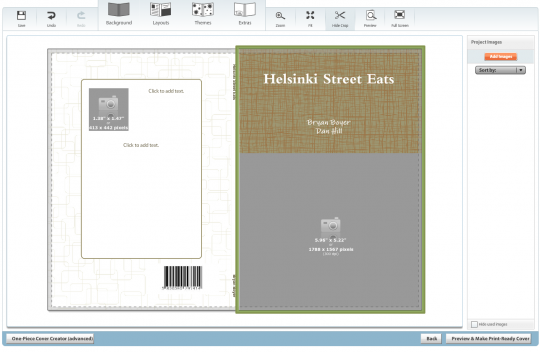
Never trust a website to design your book cover
Yes, the food booklet is still coming. In fact, that should be available for download by tomorrow. The Print on Demand Service tried to design a cover for us, but we've decided to go a different direction.
The good part of friday was spent in Kalasatama in a workshop about food entrepreurship. The session culminated in three, at at times four, people around a laptop drafting the one page description of the project that we spent the day sketching out. It's trending in the right direction and now we need to work quickly to ensure that we can meet an ambitious timeline.
Sitra has been active on food topics for a while now, most recently by supporting the development of the wholesale market with an eye towards local and organic products. That was work on the 'platform', and our upcoming efforts will be building an 'application' to take advantage of that platform.
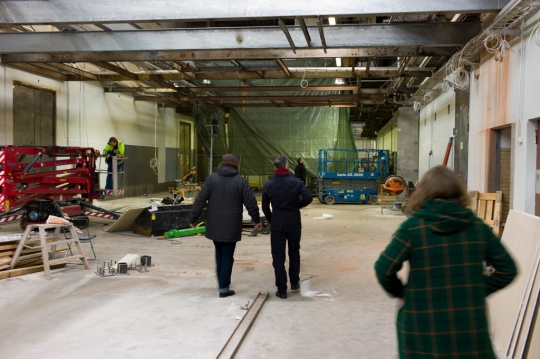
The centerpiece of the wholesale market is Kellohalli, an old butchery facility that is named for the clock on its facade. In a few months this space will be cleaned up and open to the public.
To close, an interview with Jonathan Ive in the London Evening Standard. He describes himself as "interested in being wrong." I think I like those words more than the things he and his team produce. The interview is full of good stuff, including this:
We struggle with the right words to describe the design process at Apple, but it is very much about designing and prototyping and making. When you separate those, I think the final result suffers. If something is going to be better, it is new, and if it’s new you are confronting problems and challenges you don’t have references for. To solve and address those requires a remarkable focus. There’s a sense of being inquisitive and optimistic, and you don’t see those in combination very often.
Marco declares, "winter is officially over." Mind you, this does not mean that spring has sprung, but we are expecting a week of consistently positive temperatures. Small steps.

Last week this pile was snow. By the end of this week it will be slush. Yuck.
A solid heads-down week here on the home front with no travel and no major events. Just a lot of good conversations in between dispatching work across the slate of ongoing projects.
Dan and I were working on internal stuff including Sitra's portfolio management, language habits, systems, and spaces. This sounds like a lot because it is a lot. The organization has committed itself to what amounts to a rather significant transition in a short span of time and many of us across Sitra are contributing to various parts of this.
Coordination is not an issue so much as continuity. When working in different teams with disjointed schedules and at least two languages in the mix, keeping continuity through the work—and through its full duration—is the challenge.
Although we have a good store of experience in house, bits and pieces of this specific transition make it unique, something that none of us know immediately how to handle. I might even say that having to make it up as we go along has been a positive experience. As it often is!
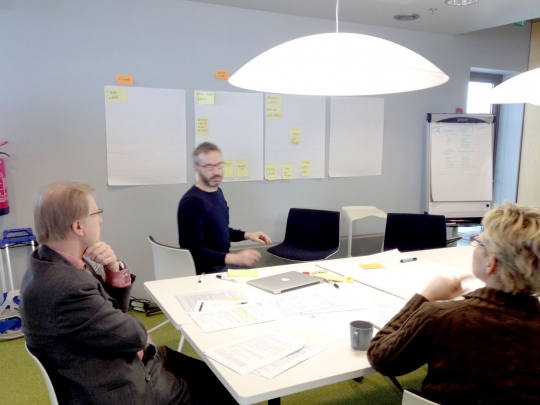
Tuula, Jukka, and Dan hashing out the hockey cards. More on this when it's ripe for sharing.
Here in Helsinki one of the local issues is a proposal by the City that the Guggenheim be invited to build a franchise in town, at the expense of the tax payers. It's an odd proposal that has been handled in a less than open manner. A recent article in Domus has done a good job of unpicking some of the issues.
Speaking of unpicking, Rosanne Haggerty, a friend of HDL, and her organization Common Ground were profiled in recently in the Wall Street Journal Magazine. If you're not familiar with the work that Common Ground does with the homeless communities in NYC and elsewhere in the US, this article is a great introduction. You might guess from this quotation why we appreciate Rosanne's unique approach to ending homelessness: "All our problems are interconnected. Nothing’s tidy." Well put.
We ended the week by hosting a visit from the Finnish Design Management Association (FDMA), Finnish Design Business Association, and some Aalto University researchers. The latter two shared a bit of their research into the ROI of design. At the core, this effort is a tried and true way to scrape together a bit of evidence that assists designers, consultants, and managers gain the respect of the business community who are still sometimes more used to thinking of design as window dressing. The work that FDMA are doing is a local study of the perceived return on investment of design for products and services.
As we are wont to do, the boundaries of the question expanded as the group discussed what purpose the evidence is intended to serve. In a simple way, evidence is really a shortcut to trust. If that's the case, numerical evidence becomes a token that some professional cultures use to build confidence and trust. Others (like most fields of design) respond better to narratives.
Part of the group felt strongly that solid numbers are a prerequisite for design to gain respect in the C-suite. The other half of the room, perhaps slightly provoked by my suggestion that made up figures may be just as effective, argued that playing the numbers game might be useful for getting in the door, but the conversation has to move beyond, to other forms of value that are harder to measure. In our own research and conversations over the years we've heard a consistent story: numbers might convince the person sitting on the other side of the table to listen to you for a few minutes, but until they see the design process in action deep trust will likely remain out of reach.
Regardless of how one packages evidence, tokens are only ever a pointer to something larger. A large enough body of facts and figures that can convince a hardened skeptic to invest in design is unlikely to come about any time soon, simply by virtue of the overwhelmingly asymmetric pile of evidence that supports business as usual. It's business as usual, after all, until one day we wake up and things have tipped.
Just as important as the evidence is the person delivering it and the relationship that they build with the people they are pitching to, both in the moment and over time. That's about pitching, patience, and persistence.
On topics of entrepreneurship I usually turn first to Paul Graham, whose website is an excellent resource. Here's what he has to say about evidence in the context of pitching to investors:
Probably the single biggest piece of evidence, initially, will be your own confidence in [what you're doing]. You have to show you're impressed with what you've made. And I mean show, not tell. Never say "we're passionate" or "our product is great." People just ignore that—or worse, write you off as bullshitters... What you must not do is seem nervous and apologetic. If you've truly made something good, you're doing investors a favor by telling them about it. If you don't genuinely believe that, perhaps you ought to change what your company is doing. If you don't believe your startup has such promise that you'd be doing them a favor by letting them invest, why are you investing your time in it?
One of the most useful things in my experience working in startups was getting rejected. It's crushing to be turned down after putting so much effort into a pitch, but every startup has to do it dozens or even hundreds of times before someone decides to make an investment. There's nothing like having one's livelihood on the line to inspire a bit of patience.
Implicitly what I am suggesting is that designers should be more comfortable with being rejected. It always feels good to win over a skeptic with a convincing proposal, but unless it's possible to build a relationship of mutual trust the collaboration will be dead on arrival. Those relationships might result in good design work, but are they likely to yield a knockout success story that ends with a repeat client?
By no means it is easy, but we're now starting to see the returns from our own slow and persistent approach to developing meaningful relationships with various parts of the government here in Finland. Despite Sitra being a public sector organization, and already on the inside in that sense, we still had to do significant legwork to develop the right pitch, delivered to the right people, at the right moment(s). The Design Exchange Programme is one return on these efforts.
In recent years it has been remarkable to see the startup community build an open dialog around the many issues involved in establishing a technology business. The Aalto Entrepreneurship Society here in Finland is just one example. It strikes me that they understand something which often still eludes the design community: designers can be cagey about discussing ways-of-working, as if confusing the how with the what. The thing that our clients—public or private—care about most is what difference our work makes in the world. How it happens is up to us, the design community, and the more of us sharing the tricks of the trade the better off everyone will be. That's why I found our conversation on Friday so encouraging.
Good luck to FDMA, thanks for coming by, and we'll be sure to link to the results of the study here when they're available.
So it is and so it goes.
The middle of February is Ski Week in Finland. I was holding down the fort while Marco, Justin, and Dan were on holiday with their families. Needless to say, it was a quiet week and a good time to do some reading. I'm currently enjoying Thinking Fast and Slow, and feeling as I read that I'm a spectator to my own behavior.
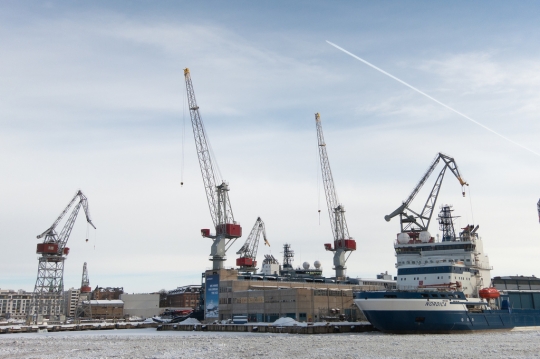
The Hietalahti shipyard was in top form last week
Also on the reading pile was a recent piece in the New Yorker that questions the usefulness of brainstorming, particularly the bit that focuses on the work of Charlan Nemeth, a professor of psychology at University of Califonia Berkeley. Psychology has been a constant source of interest over the past few months:
‘Do not criticize’ is often cited as the important instruction in brainstorming, this appears to be a counterproductive strategy. Our findings show that debate and criticism do not inhibit ideas but, rather, stimulate them relative to every other condition.” Osborn thought that imagination is inhibited by the merest hint of criticism, but Nemeth’s work and a number of other studies have demonstrated that it can thrive on conflict....
Criticism allows people to dig below the surface of the imagination and come up with collective ideas that aren’t predictable.
I like this because it brings a bit of weight to one of the working assumptions of the studio: that a mood of collegiate debate is useful in really testing ideas so that they are as robust as possible when they come out the far side of the discussion.
Other things. We're doing a second printing of the book. Mostly we need more copies because our supply is dwindling, but it also gives us a chance to correct any typos or other mistakes. Do let us know if you've spotted something.
Marco has been doing some work with DMI as co-chair of their European event which will be held here in Helsinki this year. That's April 25-26 if you're going to be in town (or would like to be) and it promises to be good with a focus on "consumer + citizen + community + society".
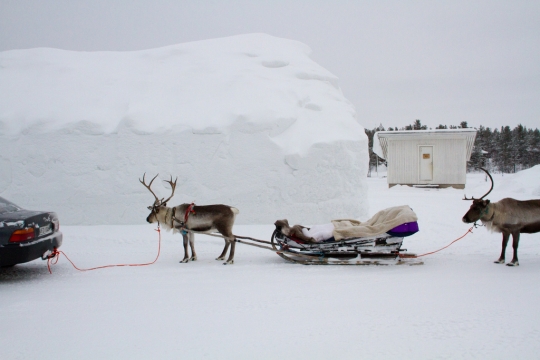
And yes, I did get a chance to take a break so I visited Saariselkä which is near the top of the world
The week we're about to write into the archives here was the bridge between January and February. So it was a while ago, but since it's Week 150 (!) and technically still about the first month of the year, I thought I would share a bit of our trajectory for 2012.
From time to time we have strategy days. We tend to do it once every 6-8 weeks and these days involve the team secluding ourselves outside of the office in a cafe or restaurant for extended review of all of the ongoing work, any upcoming possibilities, and the various loose ends.
It feels like a nice rigor: meet 1st thing in the morning, make a long list, sort it until the easy stuff is at the top and the important-but-nebulous stuff at the bottom, and start discussing items off one by one. Refill coffees when needed.
The core of the conversation was on the portfolio of ongoing projects. It looks something like this:
- Low2No: continues apace. We're in the thick of it now with intricate negotiations tied to our investment relationship between Sitra and our two development partners. This project is about developing and demonstrating the efficacy of a model for low carbon urban development.
- Design Exchange Programme: The first placement has started already. We're negotiating the next 1-2 placements and hope to announce them soon. This project is about testing the (hopefully positive) impacts of having designers sit within municipal and ministerial project teams to connect strategy to implementation through design methods and approaches.
- Helsinki Street Eats: we're basically done with a publication and doing final due diligence on image rights and things. In parallel we're getting to know the key actors in Helsinki around street food. This project is about catalyzing some of the recent organic developments in food culture into a way to open new opportunities in policy and business.
- Brickstarter: research is well underway and we're starting to get lost—in a good way. This project is about developing new ways for communities to make shared decisions that take into account shared values.
- Sitra internal development: Sitra is currently reflecting on the way that we pursue our mission of making Finland a leader in sustainable wellbeing and we're playing an active role in these workstreams.
This on its own feels like an ambitious lineup for 2012. But there's one thing which is conspicuously missing: HDL Global. Two years ago we culminated the activity of 2010 including three studios and three case studies by inviting a group of incredible people to reflect upon and speculate about the role of design within government. Two years on and it feels like there may be another useful check-in point. But we're cautious.
One of the core principles of HDL Global 2010, like HDL 1968 in fact, is that we felt it important to bring some new knowledge to the discussion. That's why we did the studios and case studies first. Too often gatherings and conferences end up being a bunch of people in the same place at the same time. Don't get me wrong, there's a lot of value in this, as simple as it can be, but conferences for their own sake are rarely transformative and often exhausting. When making a soup first you have to boil a stock, you know?
Our caution about HDL Global 2012 stems from the fact that our work is at a fragile stage right now: will it be ready to share in a meaningful way by the end of the year? Low2No is producing very important learnings, but some of it is still hard to share openly; the Design Exchange Programme is just off the ground; and Food and Brickstarter are only now revving their engines so to speak.
My suspicion is yes, we will have insights to share in 2012, but we're waiting a bit longer before making a final go/no-go call. The topics of the moment in our team are the cultures of decision making and an interest in coherence. These would be the themes of HDL Global 2012 if we had to choose right now.
The former has been simmering for years, but developed to a new level of articulation during a coffee conversation that Dan and I had last spring. We were speculating about why some people are more naturally able to see opportunities for change and others are more tied to the status quo. My proposition was (still is!) that people who have experience with making things are more aware of and better informed about the choices involved in making that thing, and therefore better able to see the degrees of freedom. To see where a different course of action could be taken, perhaps even desire it.
The process of making a soup, for instance, helps give you insight into ingredients, first of all. But also the proportions between the ingredients and the sequencing and techniques of their handling. The first few times one makes a particular soup they may follow the recipe strictly, but an experienced chef is able to move away from the recipe and work on the principles underneath them. What starts out as a singular choice—to soup, or not to soup—devolves into many, many more discrete questions about all the nuances of the dish.
This applies to car engines, train schedules, literature, and legal documents as much as it does to soup. The more you know a thing, the better you see the landscape of possibility and, I would argue, the better you are equipped to question it.
When we talk about cultures of decision making, we're interested in the ability of individuals to see this landscape of choices, as well as their ability to navigate that landscape to consider alternatives, and what factors they use to evaluate alternatives and make a decision. In a way, we're pursuing a behavioral economics of the creative act, or a future studies of the present. These fields are stirring in our heads and reading lists along with neuroscience, psychology, and ethics.
In our various projects we're working towards something along the lines of a comparative study of cultures of decision making. When we work with the city on food regulations or talk to a community about how they decided to build a wind farm we're not interested so much in food or green energy, per se. Rather, it's the ways that they succeeded or struggled to make coherent decisions… which you might remember as the second bubbling theme of interest lately.
I think it was Marco who first articulated that "design is ultimately about bringing coherence" to a situation or thing. This feels like a useful evolution of the phrase that we've previously used to describe strategic design. We usually talk about strategic design bringing the same craft and care to decisions as traditional designers give to objects. "Coherence" is nice because it describes something specific and it also works well for both traditional and strategic definitions of design activity.
As we look at and explore these various cultures of decision making one of the things we're deciphering is how they construct and act on notions of coherence. What looks coherent to one person or community my not be so for another. It's a fascinating way to crack open a discussion. Or at least we're having fun with it, but maybe that's because we're all pretty nerdy for this stuff when you get right down to it.
What's on the top of your mind these days?
Three polite words that begin with F: frozen (temperatures), and freedom (from fossil fuels), and food. Let's see how these unpack.
Now that winter has set in, we are regularly experiencing temperatures in the range of -10º celsius. This makes for treacherous sidewalks but otherwise adds lots to the quality of life in the city: cross country skiing, sledding, new things on the ice, and plenty of light reflecting off the snow.
Recently Dan, our colleague Karoliina, Nina the intrepid interpreter, and myself spent a day in Hamina where it was also very frozen. Located 1.5 hours east of Helsinki, Hamina used to have two industries: a port and the paper mill but the later closed down in 2008.
Luckily for them, the mill premises found a new tenant who values cheap energy and the location's essentially limitless supply of cool Baltic water: Google purchased the property in 2009 and set up a data centre shortly thereafter.
Although the Google story is interesting, it's not the core of why we went to Hamina. We were there to learn about the way that the city has successfully fostered green energy, both as an energy source and as an industry. Early indicators point to Hamina as a positive example of how a community de-industralizes itself with as little long-term pain as possible. They paid attention to larger structural changes in Finland's economy and reacted decisively to find a new way forward. Google's data centre was one positive outcome, and the other is WinWind who manufacture wind turbines. In parallel with these new developments in the local economy, Hamina's municipally owned energy company also courageously set up a modest wind farm.
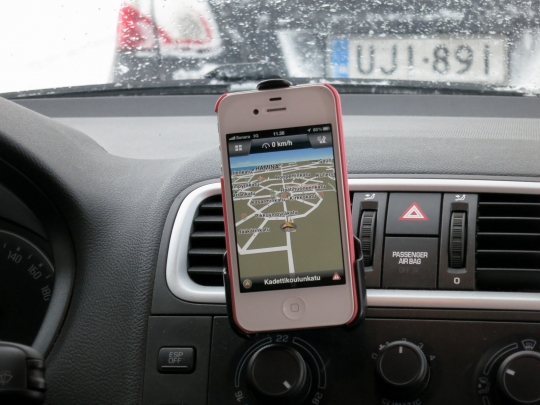
Hamina is known for having a circular town center
We wanted to understand how this happened. How does a community make decisions about its future? Or in other terms: how do communities make shared decisions from a shared value perspective?
Shared decisions are those which are bigger than any one person. Things like building a new road or rail, cordoning off a nature reserve, or passing a law. And shared value is measured in financial as well as social and ecological capital. Although the term is borrowed most recently from Michael Porter, the basic concept is by now quite generic—you might even argue that figuring out shared value is the challenge which underlays all others.
Our trip to Hamina was the first bit of research into this. How did they get the idea to build a wind farm? And how did it get negotiated in real space, with real euros, real local politics, and real personal opinions? How did Hamina decide to open its port area to new industries? How did Hamina propose for itself a new future?
In the coming weeks and months we'll be visiting other communities that have made—or failed to make—shared decisions as we try to better understand how we might help these processes flow more easily and productively.
One of the areas of focus is a phenomena called Not In My Back Yard (NIMBY) and how we might crack open more opportunity for Please In My Back Yard. In essence, we're interested in how communities balance the right to express negative opinions with the civic obligation of participation in the public realm, in local economies, in politics, in society. So how do we make it more meaningful and easier for people to engage in shared decisions? That's what we'll be focusing on in the area of work we've been calling Brickstarter internally.
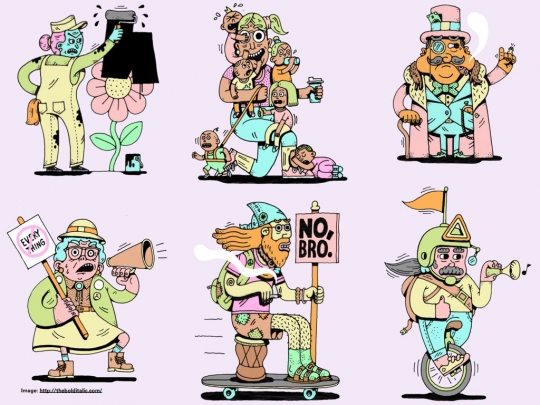
A collection of NIMBY archetypes by Miquel Hudin drawn by Loren Purcell
Justin, Marco, and Johanna spent most of Friday in Lahti working with the city planning department there as part of our Design Exchange Programme. Things there are off to a good start with an ambitious timeline. We are also working on a new website for the exhange participants to share their experiences regularly.
Internally at Sitra we continue apace with work on tools, systems, working culture, and spatial resources. The first three involve lots of meetings in conference rooms, the latter involved one meeting in a design studio. It's also worth noting that there's a new Sitra.fi website!
Dan was over in London this weekend giving a presentation at The Design of Understanding. It's a safe bet that you can expect a write-up of some 10,000± words from him in the nearish future.
As always, an update on the food work. We spent a bit of time in Tukkutori with Elina and Ville, sharing notes on what we're up to and the same from them. Tukkutori is Helsinki's wholesale market and will be opening to consumers in the fall. Lots of exciting stuff planned there and we're seeing how we might be invovled, particularly with an eye towards strengthening the pathways for good ideas to grow up to be good businesses and good regulations and policy.

You never know what you're going to find in Tukkutori
And yes, some mockups for print. The food booklet we're working on may or may not come with a poster.
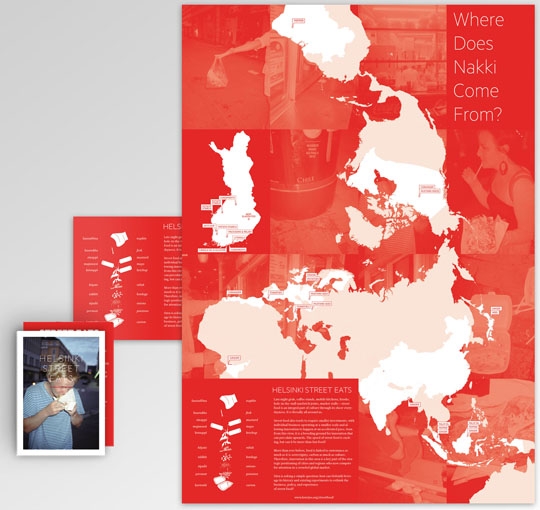
And... decloak!
Hi, we're back. Closing out all of the work and accounts before the end of the year became more hectic than any of us expected and that means we ended up with nothing more than crickets on this blog.
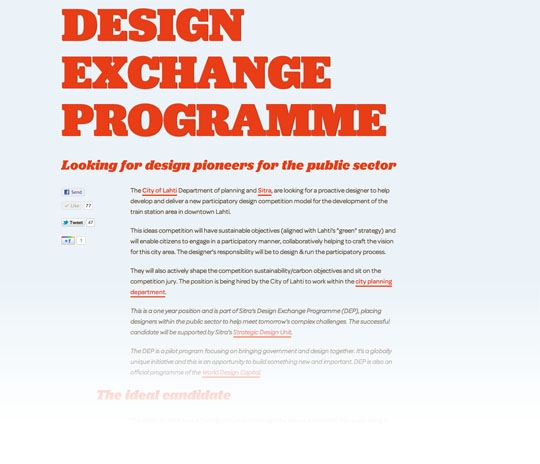
The Design Exchange Programme was announced in December and is now off to a promising start
In the interim, perhaps the biggest news is that we launched a new project called the Design Exchange Programme. At the moment it's a small and modest with just one placement. We'll have a full introduction to the chosen candidate in due time, but for now we would like to congratulate Sara Ikävalo on her successful application and thank her for taking this leap with us. We look forward to beginning in earnest in February.
Sara was the winning candidate out of a pool of nine applicates, four of which we had interviews with just before the holidays. With our Lahti placement now specified, we're beginning to look at the second partnership with another government body here in Finland. Updates when we can share them.
Otherwise: much of the same here. Dan and I are continuining to crunch on the street food booklet which we are now a bit late one. We're learning the hard way what it's like to bite off more than you can chew. Then again, the up side of never promosing a specific delivery date is that you're never late. But all jokes aside, we do hope to have a draft available for download imminently. At the moment we're doing the dilligence of clearing publication rights for archival images and other fun feats of legal maneuvering.
We have also been doing quite a lot of internal 'consulting' work on two fronts. First and foremost to work through our in-house strategy for internationalization, an update to our shared ways of working, and this inevitably means also looking at internal culture. These are mostly about behaviors and practices, but are always bound up in the artefacts and tools as well. So we find ourselves sketching out new document types, interfaces, and other bits of the internal Sitra workflow. We're interested in moving these into paper prototyping at some point, and then hopefully further into light weight software prototyping.
Marco and Justin are busy as ever with Low2No. Marco has also been spending time lately in discussions about potential upcoming work. Since we're not a commercial firm we don't have business development, per se, but we still spend a fairly good chunk of time exploring opportunities with a variety of potential partners to make sure that the projects we take part in are ones where we feel we have something useful to contribute.
And to close I'll leave you with nearly identical snapshots from two Nordic capitals near the end of the year:
As I write this post there's a bubbling hive of activity behind me inside the Flanders District of Creativity in Leuven, Belgium. I've come to sit in the back of the room while the government of Flanders hosts a studio on child poverty. But more on that soon. This is the culmination of a particularly hectic week with two book launches in the US, some fast-paced work on a handful of projects in Helsinki, and now Belgium.
Let's start in New York. Justin, Marco and I were pleased to host a launch party for In Studio with Amb. Ritva Jolkkonen, currently the Consul General of Finland in New York. She very kindly welcomed a group of designers, NGOs, and public sector people for a gathering at her residence which features a rather stunning view over central park. Naturally, this is the one time (seemingly) when I did not have a camera on me. You will have to imagine the view.
On Tuesday Marco spent the morning presenting at and moderating a discussion for an event hosted by MIT's Collaborative Initiatives. I wasn't in the room, but from what I hear he did a bang-up job keeping a group of big-wigs on track.
Just to make sure we're not being lazy, we also hosted a book launch in Cambridge, MA that evening, seeing as we were already in the neighborhood. Turnout there was good and it was nice to see some familiar faces.
Back in Helsinki, I had a brief meeting with the Helsinki Ympäristökeskus (Environment Center) relating to our ongoing street food work and Dan and I had the pleasure of meeting Stuart MacDonald. Stuart was in town from Glasgow for an event hosted by the British Council. He alerted us to some of the strategic design work that is bubbling up in the UK, particularly around community planning. We'll be digging into that more in the future as Brickstarter ramps up.
Oh right, Brickstarter is ramping up.
Speaking of the UK, Dan was in London for something less than 24 hours to participate in a meeting of the minds that attempted to merge neuroscience with... urban planning!
Amidst all of this Aalto University reversed an earlier decision about the name of the school which contains the departments of art, design, and architecture. Previously they had announced that it would be called the School of Arts and Creativity, but after significant public uproar it will now be called the School of Art, Design, and Architecture. Personally I see this as very positive. Claiming 'creativity' as a namesake was not only a little greedy, but also rather devaluing of the disciplines that the school represents.
The studio here in Leuven is getting ready to make their final presentation so I will hastily close this weeknote and leave the details of what's happening here for the next post.
Roll call! Johanna is mostly pitching in on Synergize Finland projects, Justin is holding down the fort in Boston, Marco is in Moscow giving a talk at Skolkovo, and Dan is somewhere in Australia running at a breakneck pace with a full slate of talks, workshops, and meetings there. For more on that, follow Dan's Twitter account or look for the mentions of @HDL2010. And this leaves me, alone in Helsinki, spending the day out and about and writing.
Between bouts of project planning and other exciting administrative duties we've been continuing to drive our research into the street food of Helsinki. Below is a snippet of that, one of four narratives that we open the booklet with. They're meant to give snapshots of different key moments in the development of Helsinki's food culture. As you might guess, we're much more interested in the stuff around the food than the victuals themselves.
Ullanlinna, 1960
The woman shifts nervously from foot to foot outside the restaurant’s doorway. Above her, a green neon sign sputters into life, casting the restaurant’s name in flowing script across the elegant square, although the sun seems to have no intention of disappearing anytime soon. Still, it was late, and he was late.
She dares not go into the restaurant without him. This is not simply a matter of etiquette, or timidity on her part; it’s the law. In Finland, women are not allowed in restaurants unless accompanied by a man, so she waits. She finds this faintly offensive, as she’s heard that the reasoning is that women in a restaurant or bar on their own could only be there for one thing, and it wasn’t the food.
Dancing isn’t allowed either, for similar reasons; this she finds more ridiculous than offensive. There had been some progress, however: after the Helsinki Olympics, Alko, who set such rules, had deigned to allow the introduction of something equally licentious: the bar stool.
That the new owner of the restaurant is a woman, Mrs. Paukka, is an irony also not lost on her, but it makes no difference. For all her progressive attitudes, the woman had never been to a restaurant before, just as no-one in her family had. But she’d heard about Mrs. Paukka’s new menu—in particular the crispy fried Baltic herrings—and had pestered the man about going for weeks.
The sharp new kiosk across the square, owned by the restaurant and the only one in the country with an alcohol license, is full of men sitting, smoking, drinking, eating gelato, workers from banks and docks alike gathered around the small tables under the trees. She feels their eyes occasionally upon her. The woman pulls a copy of Kaunis Koti from her bag. She’d just bought the magazine from the R-Kioski on Korkeavuorenkatu, and had intended to save it for the tram ride home, but it would prove more useful as a screen to hide behind for the moment.
A skid of leather shoes on the cobbles behind her, accompanied by “Anteeksi, olen myöhässä!” …
Simultaneous to the writing, we're also doing some light data mining. I spent part of yesterday doing a bit of very light scripting to help us more easily pull data from the local restaurant website, Eat.fi. That process looks like this:

Left to right: 1) a map of open restaurants at a particular time, as provided by Eat.fi 2) the code on Eat.fi that makes this view possible 3) a small script that takes a bunch of copy/pasted HTML code and returns a count of the open restaurants 3) collecting that data by hand in Excel 4) visualizing it in Illustrator using a polar graph. Much faster than counting all of the dots on the map 24 times.
We wanted to make a simple point: at the moment when drinking activity on the typical weekend is spiking, food availability is crashing. Restaurants stop serving food and there is very little of a night time economy to speak of. So we made a diagram showing the opening hours of all 569 restaurants in central Helsinki. That's the red line of this diagram:
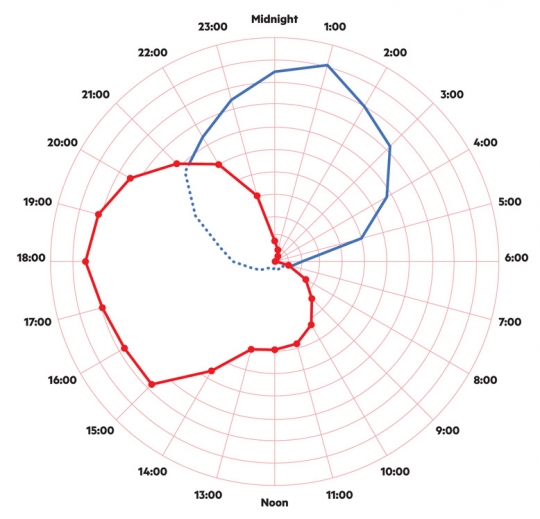
Red: # of open restaurants at each hour, as detailed in the records of Eat.fi (peaks at 422). Blue: anecdotal observation of public drunkeness (intensity & volume) on a typical Helsinki Friday
The blue line is interpretive, a sketch. It's not based on data at all. As we evolve this diagram we'll figure out a way to handle the discrepancy between these two (one based on data and one anecdotal observation) but for now it's shaping up as a way to illustrate the point. The fact that the red hoop and the blue hoop scarcely overlap is one (small) part of the reason why saturday morning the streets are dotted with puddled of vomit and why alcohol related injuries and assaults are high.
Of course this has a direct impact on the individuals whose health is impacted or who are the victims of violence or property damage. It also indirectly effects the efficacy of Helsinki's tourism strategy that seeks to make this a globally competitive destination. So here too the details matter.
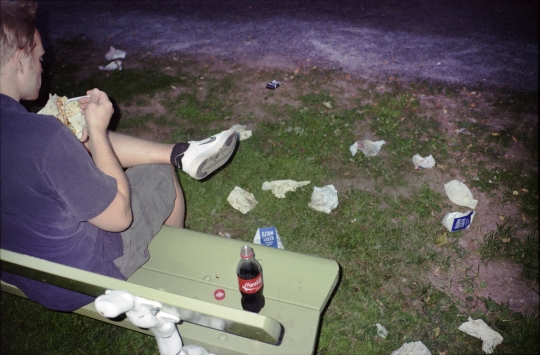
The primary offering today in Helsinki street food. Photo: Kaarle Hurtig for Sitra
As you can see, to make at point that sits at the intersection of governance, business, and culture we're starting to pull together a range of different sources as well. Mixing ephemeral narratives with the historical development of the market and its regulation from 1900 onwards; bits of data with rich imagery; interviews with close observations.
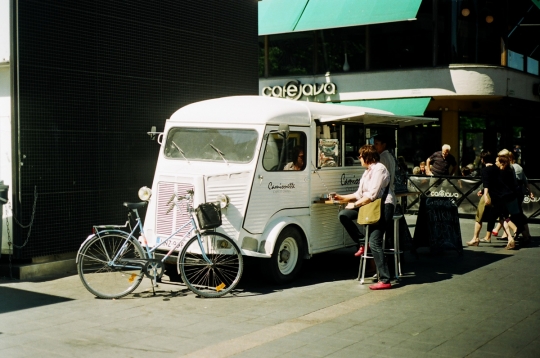
Mid afternoon coffee at Camionette
We've been moving between conversations and interviews with organizers and activitists like Olli Sirén, who has been the public face of Ravintolapäivä or Tio Tikka, who started Helsinki's only current food truck to The Public Works Department, who Dan and I visited this week.
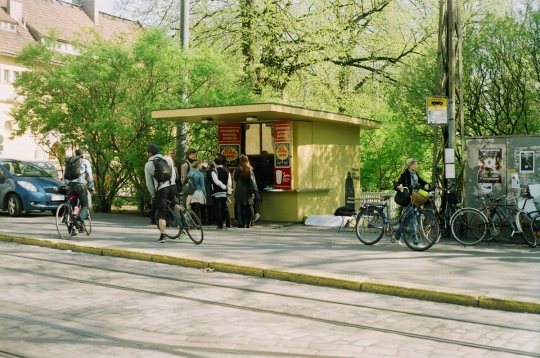
Snapshot from one of the restaurants open for the first Ravintolapäivä
In our booklet we're pulling together a bit of the history, current evidence, and indications of where there is untapped potential for innovation. Ultmately we are looking into the past before speculating about the next hundred years of everyday food in Helsinki and how we can make them even better. And in that regard we're focusing on how the dark matter, all the bits that situate food within our everyday lives—or not.
And to end, an observation about the color of milk packaging in northern Europe, provided by the ever amusing and insightful The Kaspar Stromman Design Blog.
First, a note from one of Sitra's other projects called Reviving Village Within A Town. In an effort to enable young people to have a more active role in co-designing the services that are available to them (like sports programmes), and therefore also getting more out of these services, we find two intertwined lessons. One about time and one about scale.
“People are active themselves instead of waiting for others to do things on their behalf. After all, local well-being is built on the people’s own initiative and activity,” [project manager] Mira Sillanpää points out. “You must also remember that it is not always about creating all-embracing solutions for the long term. Small changes can also have a huge impact. If the needs of the local residents change, the services provided by local authorities must change accordingly.”
In Mira's observations as quoted above, there are familiar tones of the ethos of prototyping, of beta, and of iteration. But perhaps more profound is what she gets to at the end: that times change, needs change, and that our public services should be similarly agile. In other words, being able to end programmes gracefully is as important as starting them intelligently.
And this ties to another aspect of the project which is embeded in the very name of the work: Reviving Village Within a Town. Lurking here is a recognition that scale matters too. The project is located in Hämeenlinna, a town that includes a number of smaller villages. By making room for local communities to conduct low-risk experiments in their own areas, we gain the ability to test and iterate at a more manageable scale before growing or replicating what works to other communities.
In other words, early innovations are not for everyone, and not for everywhere. Utilizing the small scale—in both time and space—allows us to be more sophisticated about our risk assessments. More of this please.
Twelve thousand kilometers away, in sunny Buenos Aires, the government there is also thinking about the power of the small scale, albeit in different ways. While in Argentina to give a talk as part of the CMD international design conference, I noticed that some of the parks have signs which implore residents to visit a Facebook page like this one. One finds a brief bit of history about the place, an invitation to share stories, participate in events, and to use the public space to organize your own functions. Smart, simple, cheap.
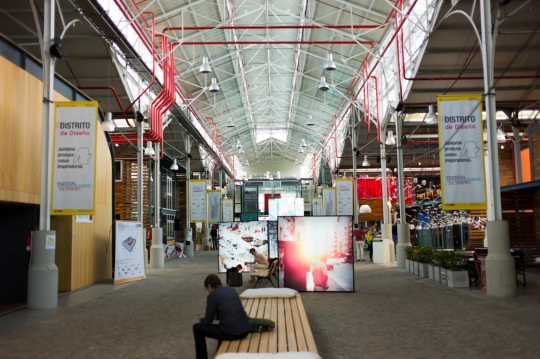
CMD is housed in a large building that used to be a fish market. It's vast!
But to CMD, the main point of the trip. The Centro Metropolitano de Diseño is a facility sponsored by the city government of Buenos Aires in an attempt to boost the creative industries. It's a bit similar to the the Design Forum here in Helsinki, except CMD also includes incubation space for young design-led companies. Under the ambitious leadership of Enrique Avogadro, CMD are expanding their focus to look at the potential for design-related business and programmes that are able to generate social capital in addition to financial capital. Being located next to one of Buenos Aires' villas provides extra imperative. This is the context in which I was there to share Sitra's work on strategic design, and particularly what it means to practice design in a public sector context.
Back here in Helsinki, as we continue to develop our work on the mysterious exchange project, we've been looking at things like this Bloomberg Innovation Delivery Fellowship. And then for no particular reason other than the fact that we saw it from a couple different people on twitter, also MIT's Atlas of Economic Complexity.
Dan spent a couple days in Sigtuna, Sweden where he was part of an international workshop hosted by MISTRA, The Foundation for Strategic Environmental Research, who are undertaking an ongoing indea development programme to identify new areas of research. After that he and I were consolidating thoughts on some small renovations to the Sitra tower.
Marco was in Finland but in and out of the office, including giving a talk at a Fortum event as well as taking part of the ongoing World Design Capital public sector working group.
Justin took a day trip from Boston down to New York to meet with the consulate there and begin preparations for an upcoming book launch later this month. He's also taking care of logistics for a launch in Boston, so if you're interested in either of these, check back in a week or so for further details.
And daylight savings time happened, so it's officially dark here. This was week 137.
Note: This piece was originally written and published in OK Talk, a book produced by OK Do that is based on a series of conversations they organized around Europe. I'm sharing here because it dips into an essential question: what kinds of qualities should we look for in strategic designers?
If one visits a design book shop they are likely to walk away with an impression that these fields are becoming more and more embedded in work outside the usual cultural territory for which architects and designers are more commonly recognized. The politics of space, the economies of place, the sociology of material, and topics along these lines are increasingly the focus of publications. But is there practice to back up the rhetoric? Yes, some—but not enough of it.
As part of our ongoing work under the banner of strategic design at Sitra, The Finnish Innovation Fund, we have been attempting to address looming issues such as demographic shifts and climate change by developing new roles for designers beyond the comfortable confines of cultural production.
There’s currently a significant gap between the activities of government and most of the design world. Our practical experience has shown that these two realms mostly exist in a current state of indifference. Governments are largely unaware of the positive implications of design as a way of working that is separate and distinct from the arts and humanities, on one hand, and science or engineering on the other. At the same time, the communities of architects and designers are largely still oblivious to the pragmatic realities of government. Publishing a book is a far cry from shaping policy.
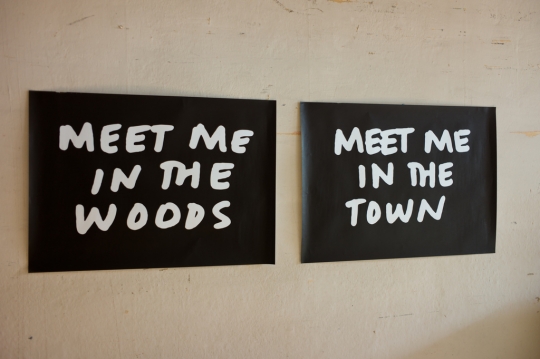
Posters by Mark Clintberg
These parallel ambivalences combine to result in a situation where working between government and design means being outside of both. There is not much of an ‘in between’. Rather than permeable borderland, we find between design and government a “no-man’s land”.
The question of the moment is who will be the intrepid intermediaries who make it their role to bridge the gap and take the first-mover advantages of doing so? As we are in the occasional habit of recruiting these kinds of individuals, we have begun developing a way to identify the skills that it takes to be successful between government and design.
What follows is v0.3 of a skill profile of the successful interloper:
Comfort with Uncertainty & Ambiguity
It’s a fact of the ‘in between’ that one will often find themselves in situations that are uncertain or ambiguous. Being comfortable in such situations is perhaps the most important criteria that we look for. In practical terms this means having the confidence and humility to take part in a conversation about topics that you do not totally understand and being able to wade into situations, contexts, and cultures that you have little or no experience with.
Paul Nakazawa, Lecturer in Architecture at the Harvard Graduate School of Design, uses the term “pre-factual” to describe situations where there is an incomplete or contested base of facts, thereby leaving those who operate in that territory without stable reference points or established practices. It’s an apt term for many of the pressing issues that advanced governments today are facing, such as financial difficulties, climate security, demographic shifts, and global interdependence just to name a few.
As a society we are now reaching a point of awkward maturity where we are able to understand the potential of humanity to impact large scale systems such as the Earth’s climate, yet we are still without tried and tested means to reverse those negative effects. In this pre-factual condition, those who work at the pivot between thinking and doing have to be comfortable with ambiguous and uncertain conditions if they hope to avoid paralysis by analysis. This implies a different attitude towards risk taking, one that has a sophisticated approach to understanding the probability and likely costs, so that calculated risks can be taken.
Translation
Whether between languages, cultures, professional cultures, or mental models, the ability to translate things that happen in one situation to be useful in another situation is a core skill of the 21st century, where the pre-factual nature of many contexts makes native expertise and experience hard to come by.
Arbitrage—the use of unique position within the marketplace to buy in one place and sell in another at a better return—is ultimately a success of translation motivated by personal gains. But there’s also an arbitrage for the common good: how can models, concepts, and experiences be borrowed from one context and put to good use in another? And more importantly, who is best positioned to accomplish this?
For this reason, individuals who have experience between multiple cultures (either literally or professionally) tend to have more advanced translation abilities and therefore more to draw on in moments of true uncertainty.
Intellect & Emotions

Rovaniemi, Finland: civic structure or giant guppy?
One of the realities of working in the public sector in many contexts is that it does not pay as well as the private sector. Because of this, working for the public good tends to involve some degree of moral compunction, which is very good and important because it’s a sign of commitment—until it gets in the way of judgment.
It’s a fine line between doing good and being a ‘do-gooder.’ The latter tend to have cloudy judgment when tough decisions come their way, while the former can maintain a critical edge even when things are rosy. But going so far as to operate without an emotional ability means being devoid of the essential ability to empathize, so there’s a balance to be sought.
Opportunism & Ambition
Striking a productive balance between intellect and emotions on a personal level is closely tied to pursuing a useful equity between opportunism and ambition in one’s work. We look for individuals who are able to see the big picture and think about redrawing it, but know that huge changes start with small steps. In real terms this means being able to seize opportunities when they arise, even if those opportunities are not perfect (they never will be), because one is able to find a place for them within a more ambitious plan. This is what it means to work today with the future in mind—to straddle a border we’re always, all of us, in the process of crossing.
Get your copy here to read the other contributions by Åbäke, Martti Kalliala, Zak Kyes, Markus Miessen, Karen Mirza, Anni Puolakka, Jenna Sutela, Teemu Suviala, Finn Williams and more.
